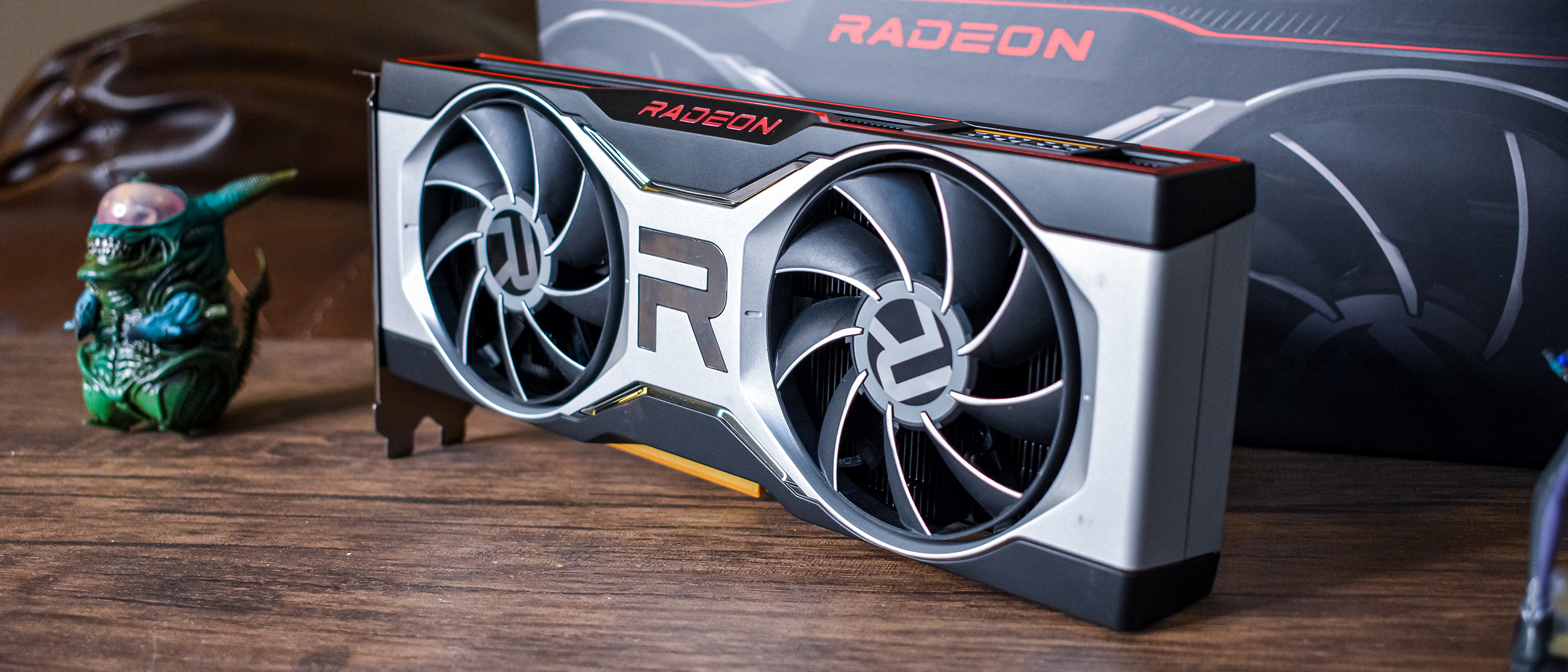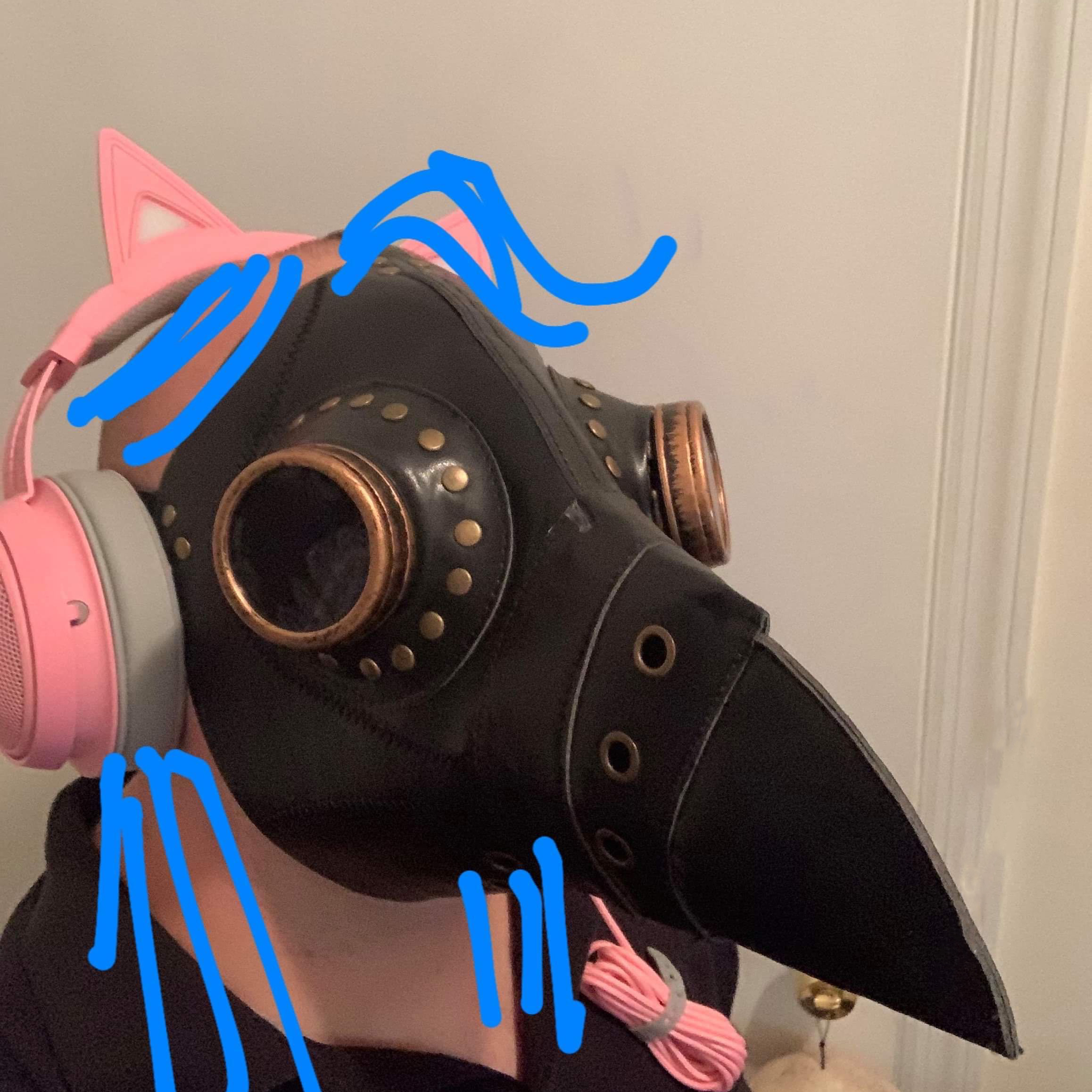TechRadar Verdict
The AMD Radeon RX 6700 XT is an excellent 1440p graphics card, bringing the RDNA 2 architecture to a slightly more affordable price. However its proximity to the RTX 3070 in price means that it might not be the best choice, depending on the games you want to play.
Pros
- +
Excellent 1440p performance
- +
Ray tracing
- +
Lightweight card with no sag
Cons
- -
A bit too expensive
- -
Ray tracing performance is weak
- -
No FidelityFX Super Resolution
Why you can trust TechRadar
The AMD Radeon RX 6700 XT has made AMD’s RDNA 2 architecture a bit more accessible to more consumers. In theory, this new graphics card is supposed to bring RDNA 2 down to the mid-range market, sitting somewhere between the Nvidia GeForce RTX 3060 Ti and RTX 3070 in performance.
That’s not quite how it shakes out in reality, however. The AMD Radeon RX 6700 XT’s price tag of $479/£420 means that it’s leaning closer to the RTX 3070 in cost while its performance falls behind the RTX 3060 Ti in enough number of games to matter. Anyone hoping that this graphics card would help topple Nvidia’s stranglehold on the graphics card market will be disappointed.
If the AMD Radeon RX 6700 XT were $30 less expensive, it would have been the perfect price for the level of performance it brings to the table. But as it stands now, it’s hard to recommend to everyone.
But generally speaking, our advice for picking up the best graphics card for your gaming PC is to figure out what games you’re going to be playing the most, and picking the graphics card that performs best for your budget in those games. Assassin’s Creed fans that have around 500 bucks to drop on a new GPU, for example, will definitely want to pick this card up. It also runs the Resident Evil Village admirably, hitting 58 fps at 4K with ray tracing – very close to that sweet spot.
So, in a lot of ways, the AMD Radeon RX 6700 XT exemplifies this approach perfectly.
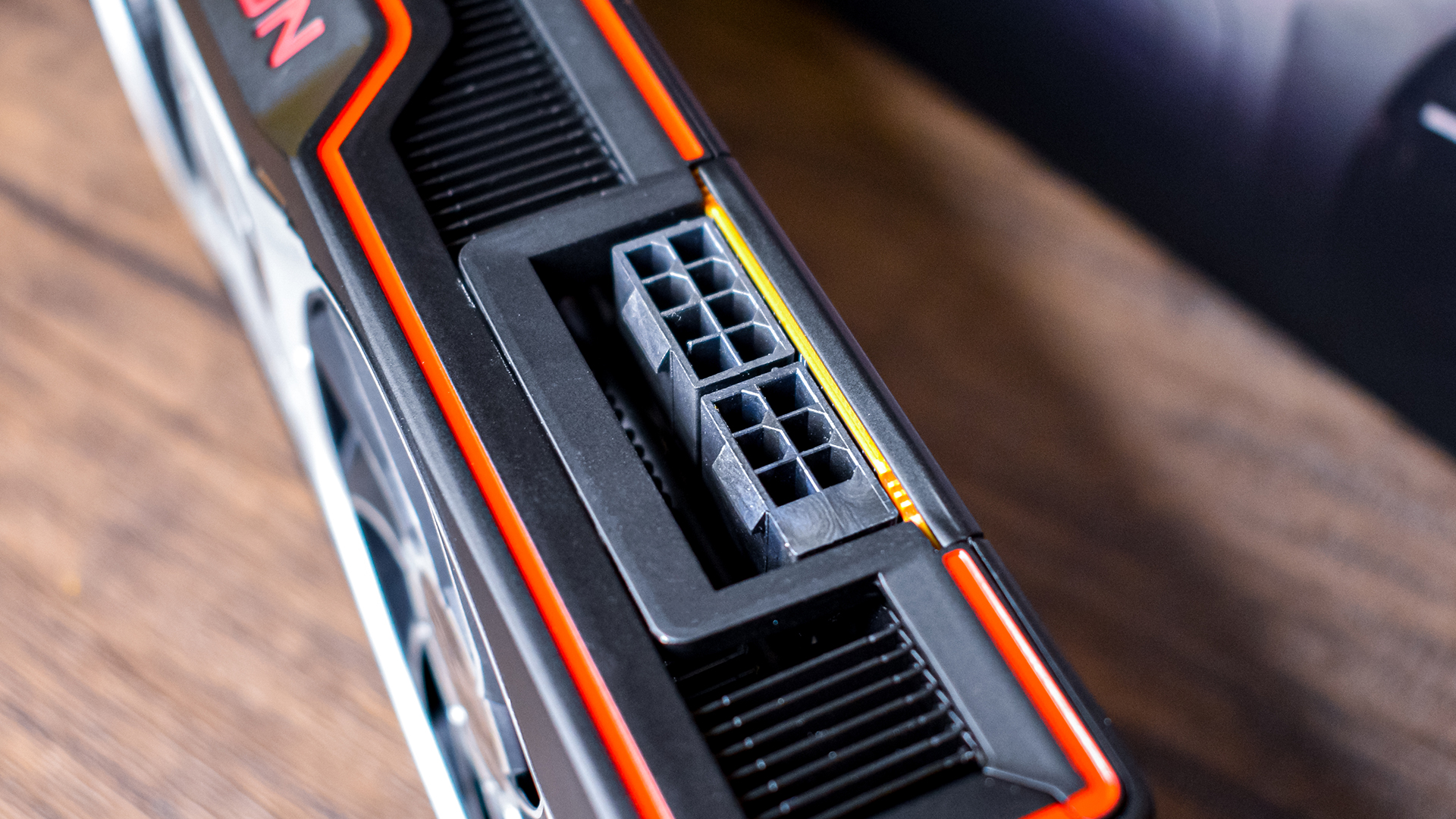
Price and availability
The AMD Radeon RX 6700 XT is available March 18, 2021, starting at $479 / £419.99 (about AU$620). However, like pretty much every other consumer graphics card, this is only the ground floor of the price, with third-party versions of the graphics card going up much higher.
And, at the time of writing, it's incredibly hard to find a graphics card from any manufacturer that will be available at retail price. Cryptocurrency mining and resellers have made graphics cards a hot commodity, and it doesn’t look like that’s going to end any time soon.
AMD is hoping to combat this lack of availability by making both the Radeon RX 6700 XT cards it manufactures itself, along with aftermarket board designs, available at the same time. Theoretically, this should mean that more graphics cards will be available at launch, but we’ll just have to wait and see how it plays out.
Assuming you can find the Radeon RX 6700 XT at its suggested retail price, its spot in the current graphics card lineup is a bit strange, to say the least. The closest competitor from Team Red itself is the AMD Radeon RX 6800, which will set you back $579 (around £579, AU$800). That makes the RX 6700 XT sound like a bargain, were it not for the Nvidia RTX 3070. The RTX 3070 is just $20 more than the Radeon RX 6700 XT at $499 (£469, AU$809).
AMD’s graphics card is a tad bit cheaper, then, but especially if you play a lot of Red Dead Redemption 2 or like to get your raid on in Final Fantasy XIV, that extra $20 is going to be worth it for the way better performance.
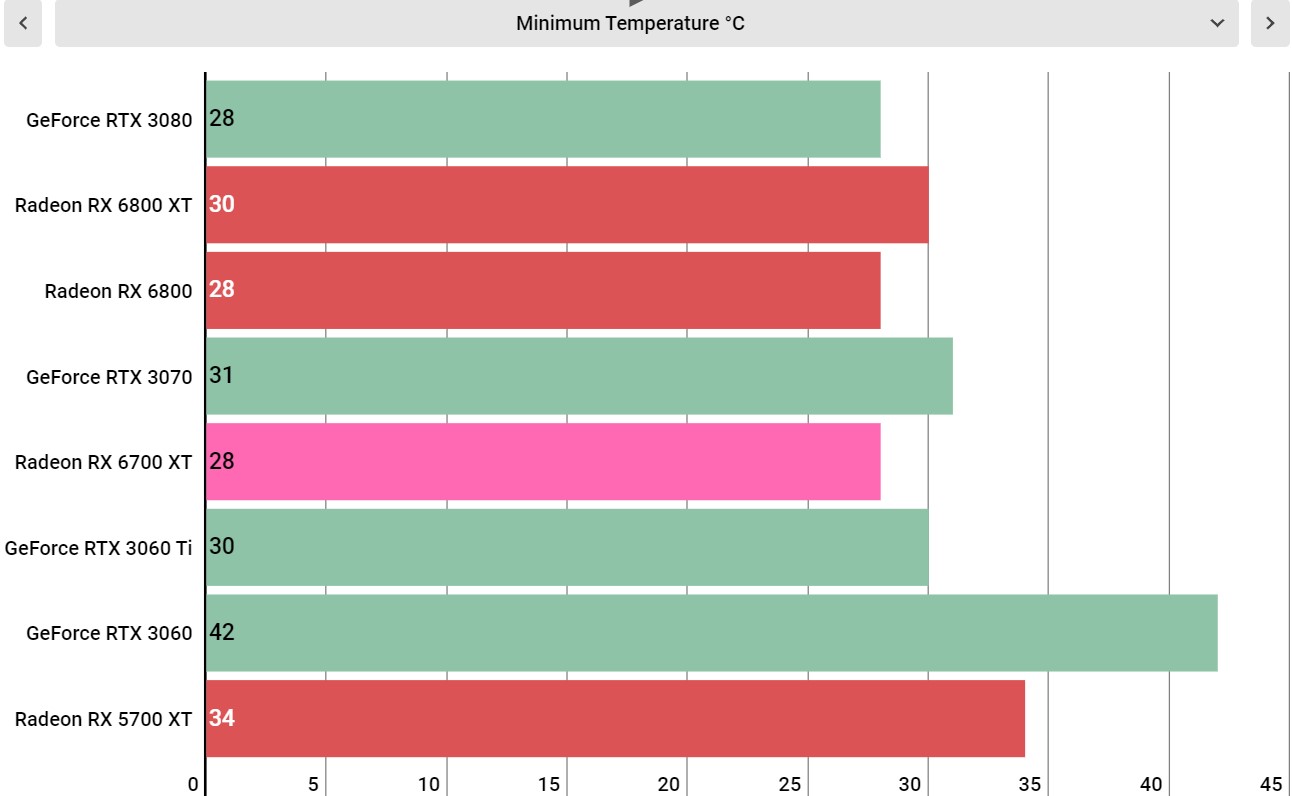
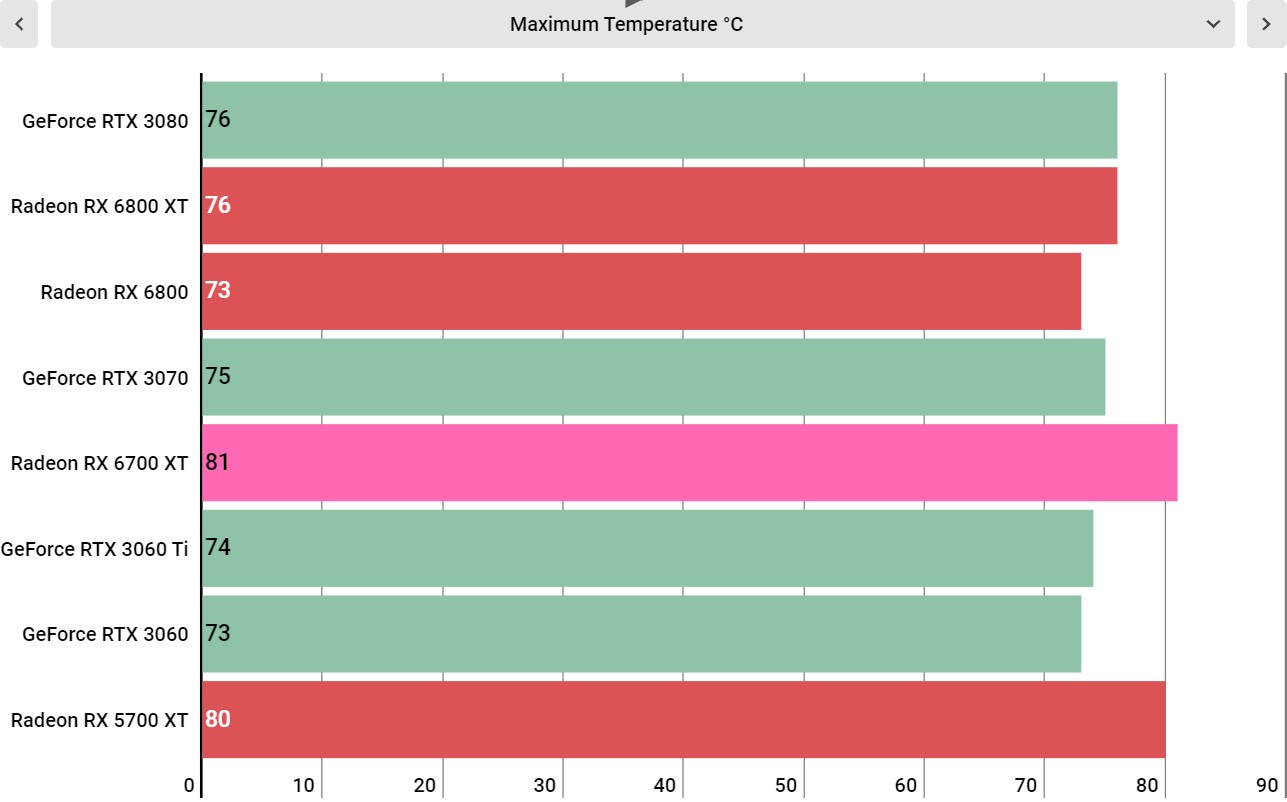
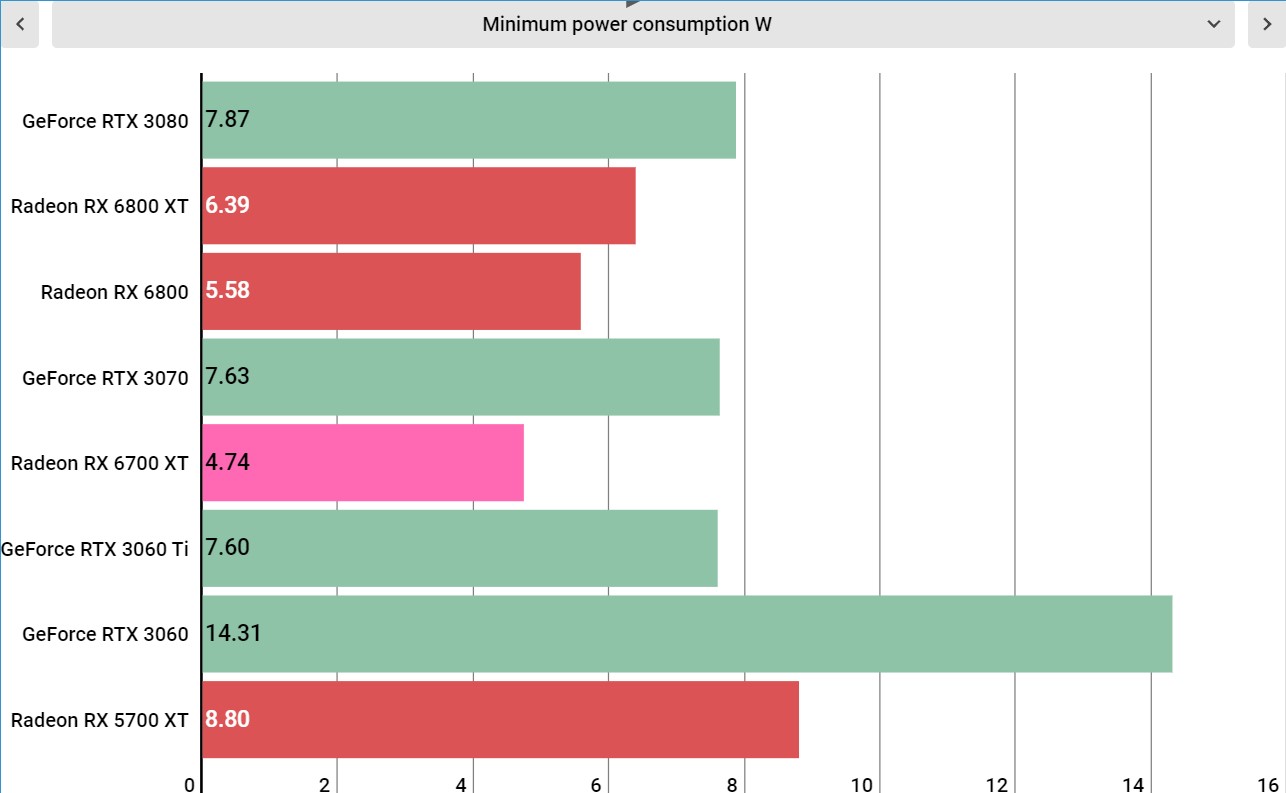
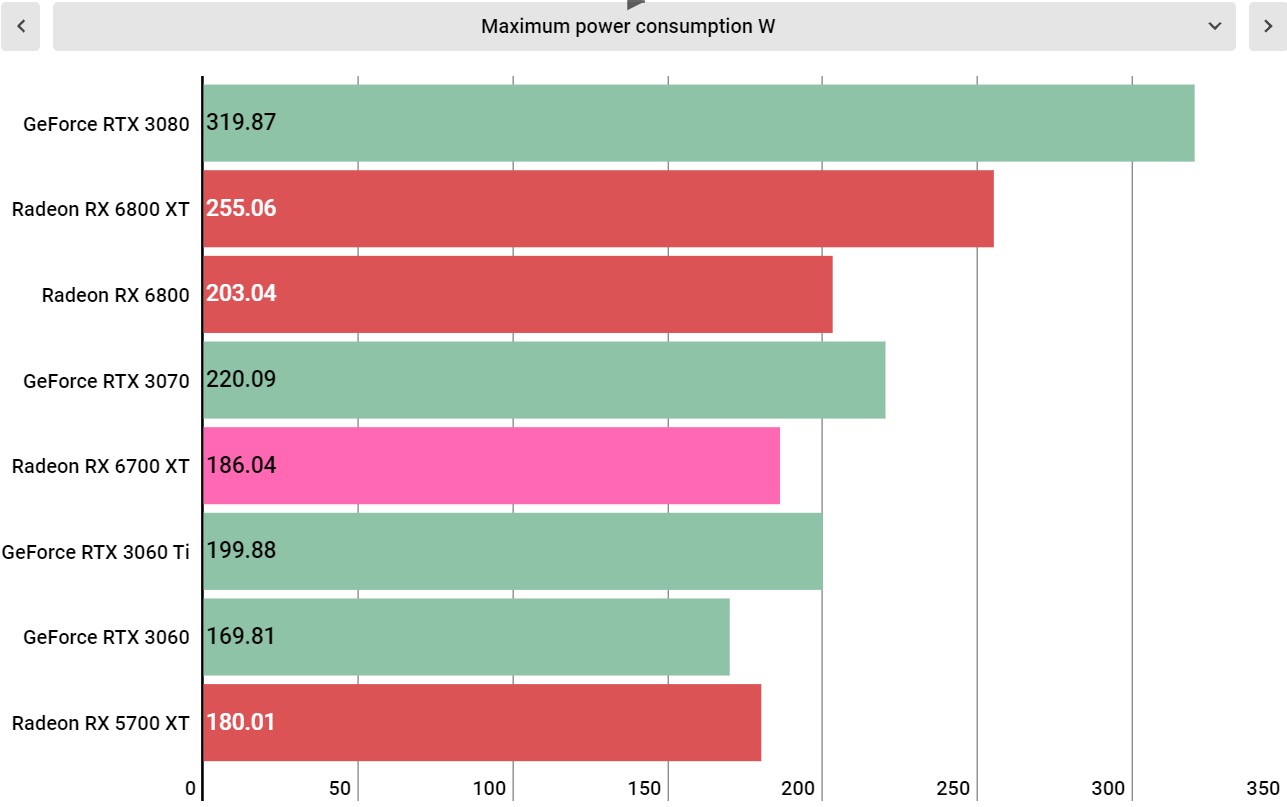
Chipset and features
The AMD Radeon RX 6700 XT, like 2020’s RX 6800 and RX 6900 series cards, is based on AMD’s new RDNA 2 architecture, sometimes affectionately referred to as ‘Big Navi’. That means all the improvements that came in those other graphics cards are present here, as well, like the greater power efficiency and, of course, ray tracing.
On RDNA 2, ray tracing is accelerated by Ray Accelerators, one per Compute Unit. And, because the AMD Radeon RX 6700 XT has 40 Compute Units, that naturally means there are 40 Ray Accelerators here. However, compared to even the next-highest tier card in the Radeon 6000 lineup, the RX 6800, which has 60 Compute Units, ray tracing performance is going to slow down considerably here – and it does.
Unlike Nvidia’s second generation RT cores present on something like the RTX 3070, though, this is still AMD’s first generation of hardware-accelerated ray tracing. So, while you will be able to turn on the ultimate visual eye-candy, it will significantly impact performance, just like it did on Nvidia’s 20-series cards when those first launched.
AMD does have its FidelityFX Super Resolution in the works, which would help significantly with this, but we still have no idea when this technology will actually be available. It’s certainly not present here, though AMD does have a few tricks up its sleeve to boost performance in some games.
One of the biggest technologies it’s pushing for this is SAM, or Smart Access Memory. This essentially gives your CPU direct access to graphics memory, which significantly cuts down the pipeline for rendering scenes in game. However, this isn’t a feature that’s enabled automatically, and it isn’t even something you can play around with in the Radeon Software. In order to enable this feature, you have to go into your BIOS and enable Resizable BAR support. This is very easy to find on some boards, and more obscure on others. But, if you’re not comfortable playing around with your BIOS, it’s not something you absolutely need to do.
The AMD Radeon RX 6700 XT also obviously supports AMD’s ever-growing FidelityFX suite of visual effects and performance enhancements. The most important of these for most people, especially anyone that just wants a higher framerate, are going to be Radeon Boost and Contrast Adaptive Sharpening, or CAS.
Radeon Boost will lower visual quality in scenes with a lot of fast movement, so you can get a boost in framerate, at the cost of visual effects in parts of the scene you probably wouldn’t notice anyway. Contrast adaptive sharpening helps when you’re running at a lower-than-native resolution, sharpening up the soft images without messing up the color and contrast of the scene.
There are a ton of other effects in the FidelityFX suite, but those are the two we would recommend most people check out.
With the Radeon RX 6700 XT, AMD is hoping to help people futureproof against future games – at least to the extent that futureproofing is even real – with 12GB of GDDR6 memory. There are some games at 1440p that will start to use up that much memory, but even those don’t see a massive performance difference when using a 12GB card over an 8GB model.
And especially when the AMD Radeon RX 6700 XT is so expensive, it seems like AMD could have cut that VRAM down to 6GB or 8GB, and made the card a bit cheaper to better secure its spot in the marketplace.
When you look at the specs beyond the VRAM, the RX 6700 XT is limited to 40 CUs and 2,560 Stream Processors with a 186W power budget and a 2,424MHz Game Clock, you’re going to run into the actual GPU being the limiting factor more often than you are the VRAM.
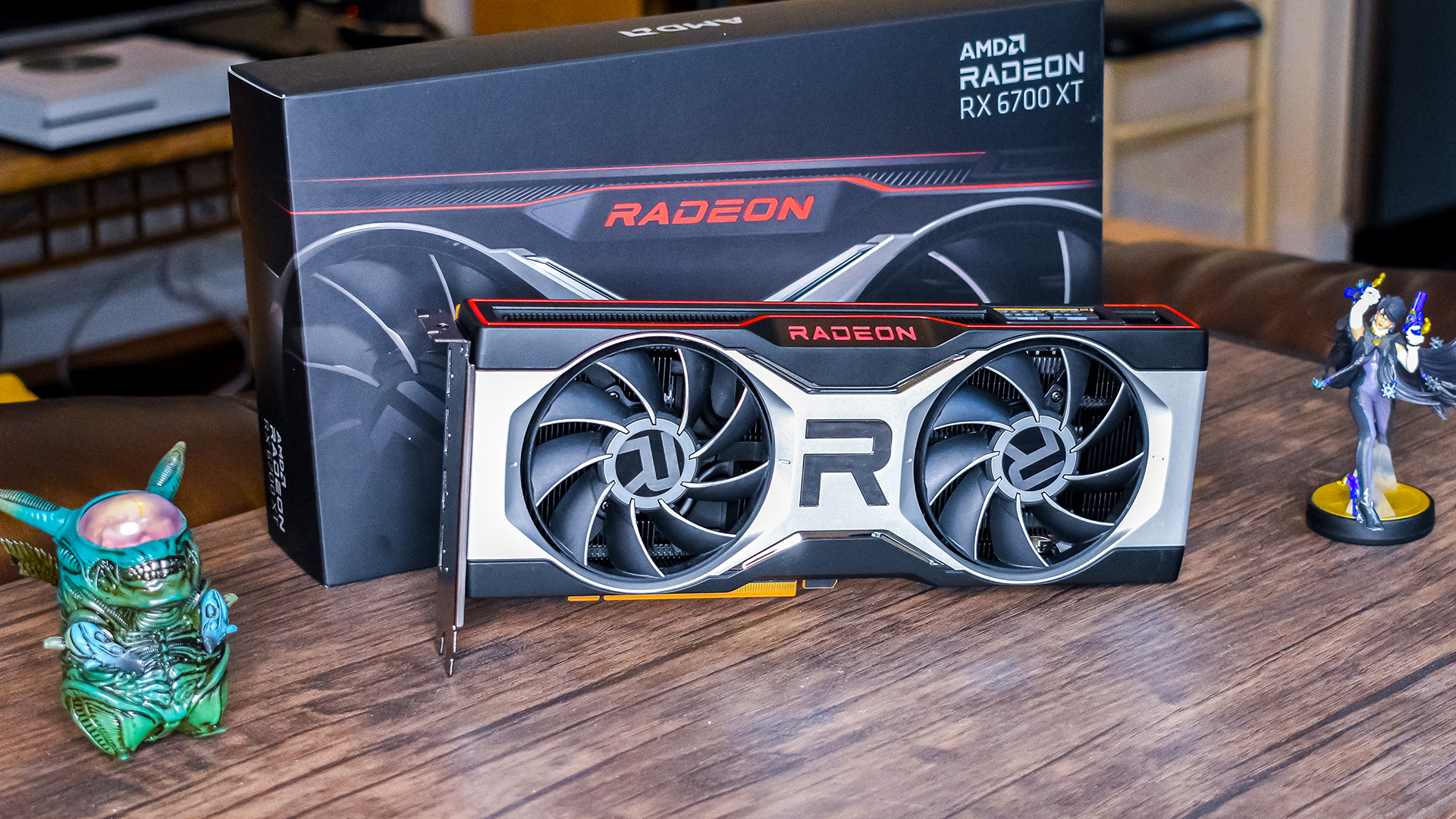
Design
The reference version of the AMD Radeon RX 6700 XT largely follows the same philosophy as the other cards in the RDNA 2 lineup. A lot of sharp angles and red lettering are present here, with a silver band down the middle of the card, and two fans with the Letter R in the middle.
And while it doesn’t have the triple-fan design as the other Radeon RX 6000 series cards, this new graphics card is actually the same length as the RX 6800 and RX 6800 XT at 267mm (10.51 inches). That means that people with mini-ITX cases might need to measure their space before they jump on this card. However, the Radeon RX 6700 XT is much lighter than the higher-end cards, which means you won’t have to worry about GPU sag here.
When the graphics card is turned on, the red Radeon branding lights up, though only in red – no RGB here. Still, that red lighting fits in with the red accents around the perimeter of the side of the graphics card.
For power, you get an 8+6-pin power configuration, with a max TBP (total board power) of 230W. Though, in our testing, without running the graphics card through a power virus like FurMark, we only saw the card get up to 186W. This just means that AMD has left some headroom for overclocking in the future.
The AMD Radeon RX 6700 XT has three DisplayPort and one HDMI output, which should be more than enough for most gamers. We would have liked to see a USB-C out as well, though it’s less important for this tier of graphics card.
But while the cooler is much less robust than other cards in the lineup, it doesn’t really need to be. With just 186W of power in normal gaming workloads, GPU temperature peaked at just 81c, with the hot spot temperature reaching upwards of 99c.
That’s just how Radeon cards work, though. If you keep an eye on your graphics card temperatures, you will notice that RDNA cards report several different temperatures. The Hot Spot temperature will occasionally reach up to around 100c, and that’s normal, it doesn’t mean your board is about to melt, it’s just the boost algorithm squeezing the most performance that it can out of the graphics card.
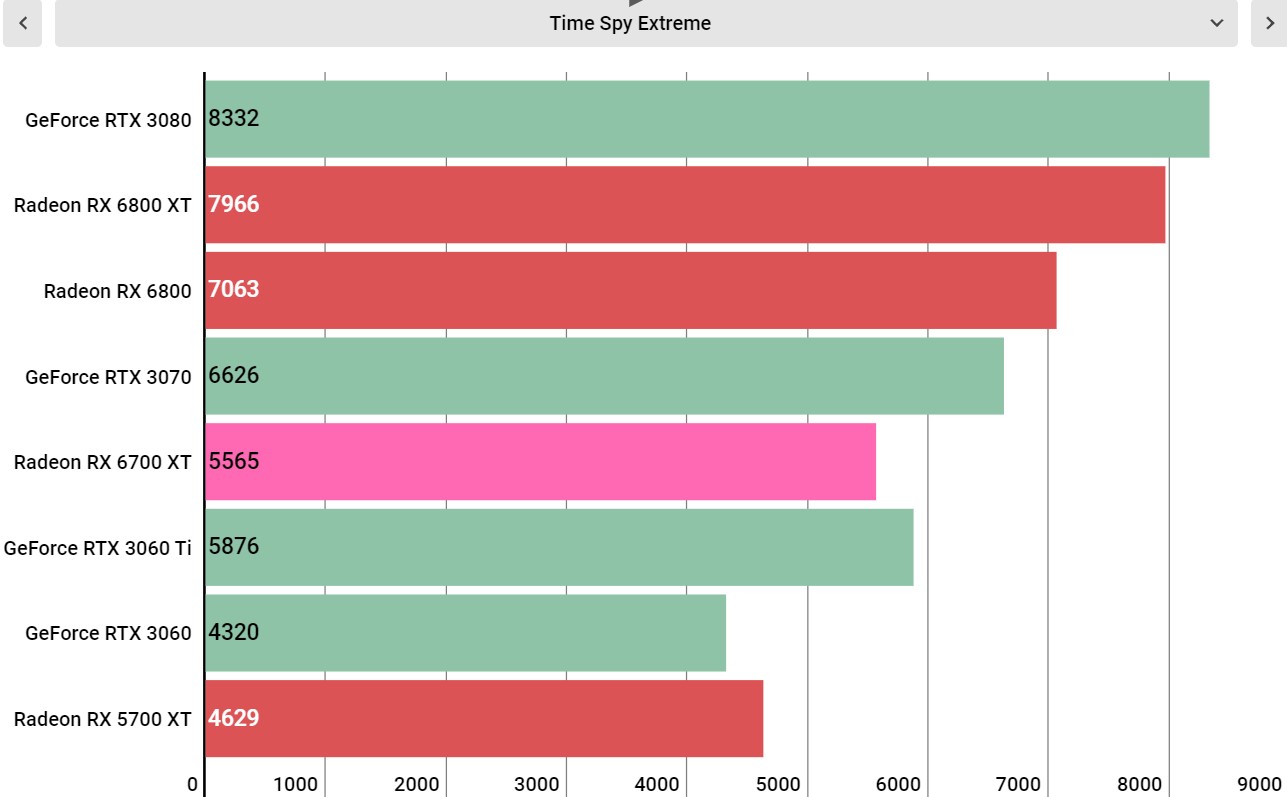
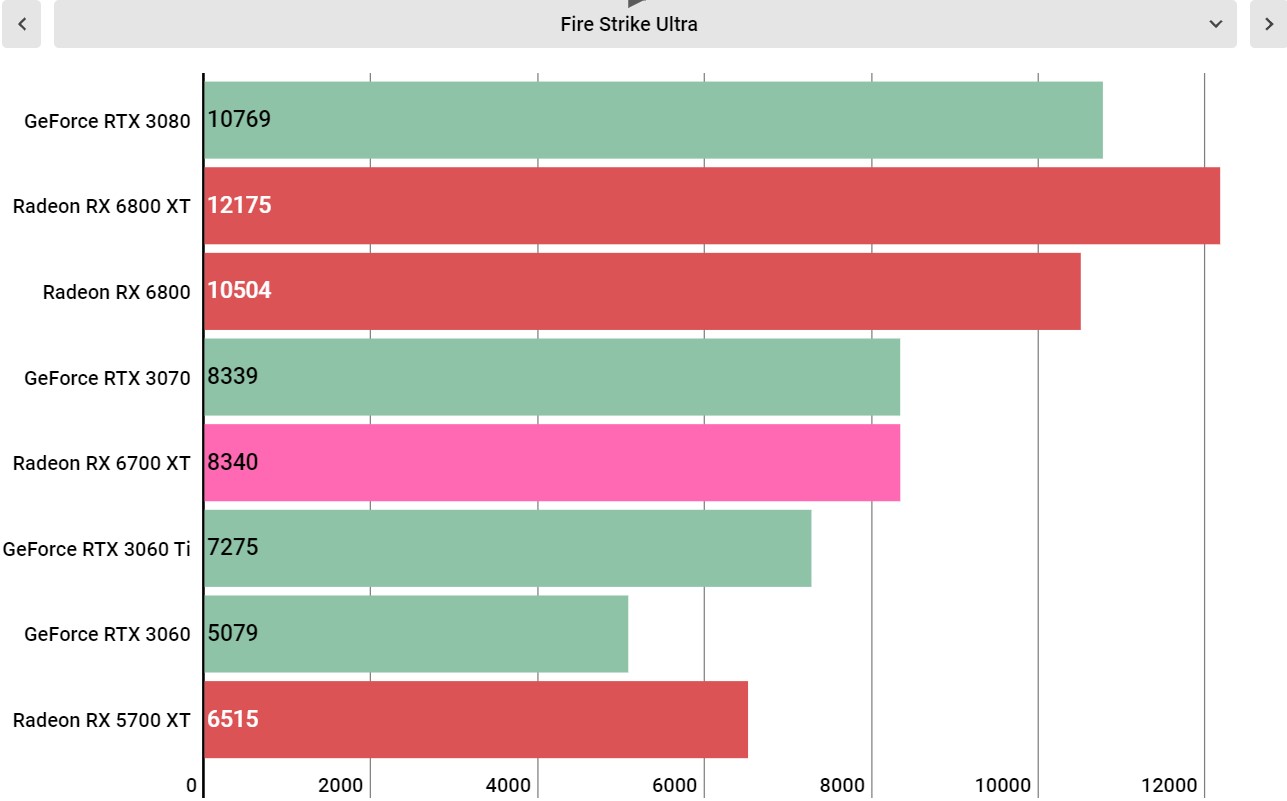
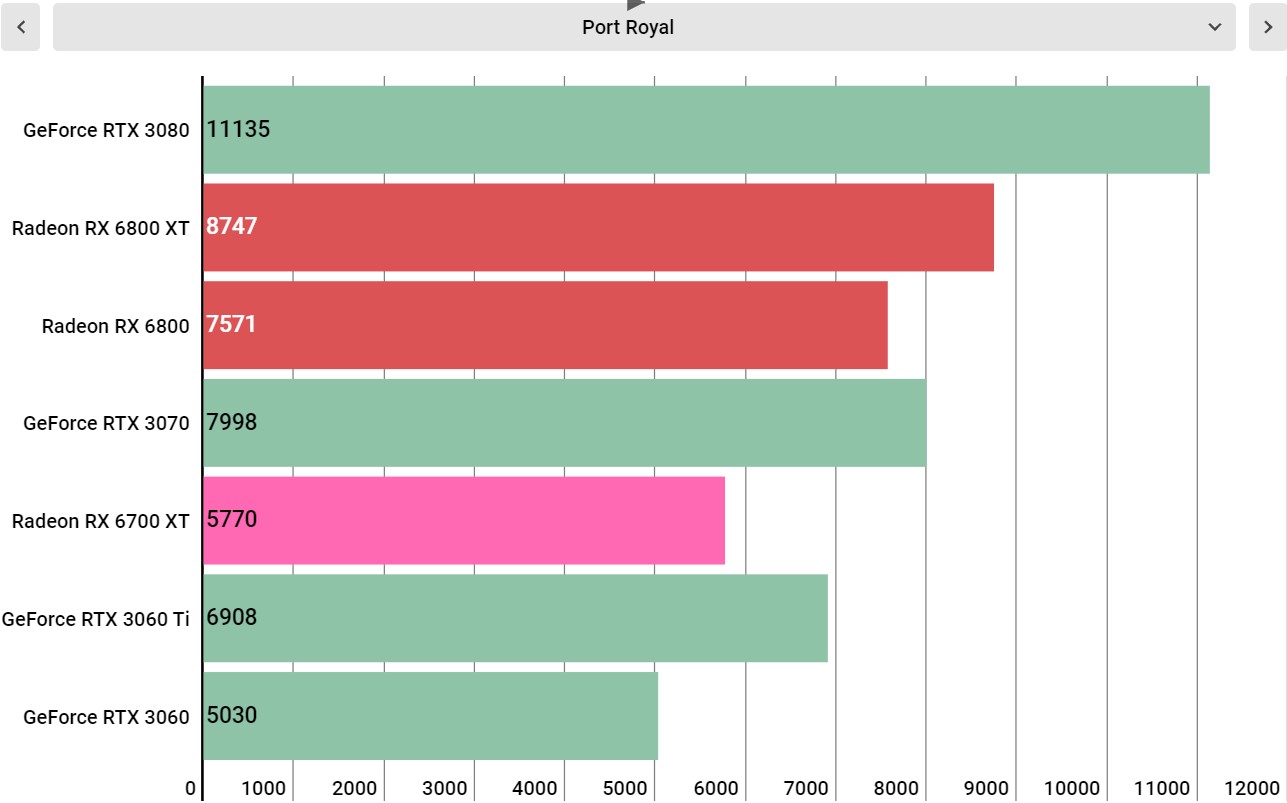
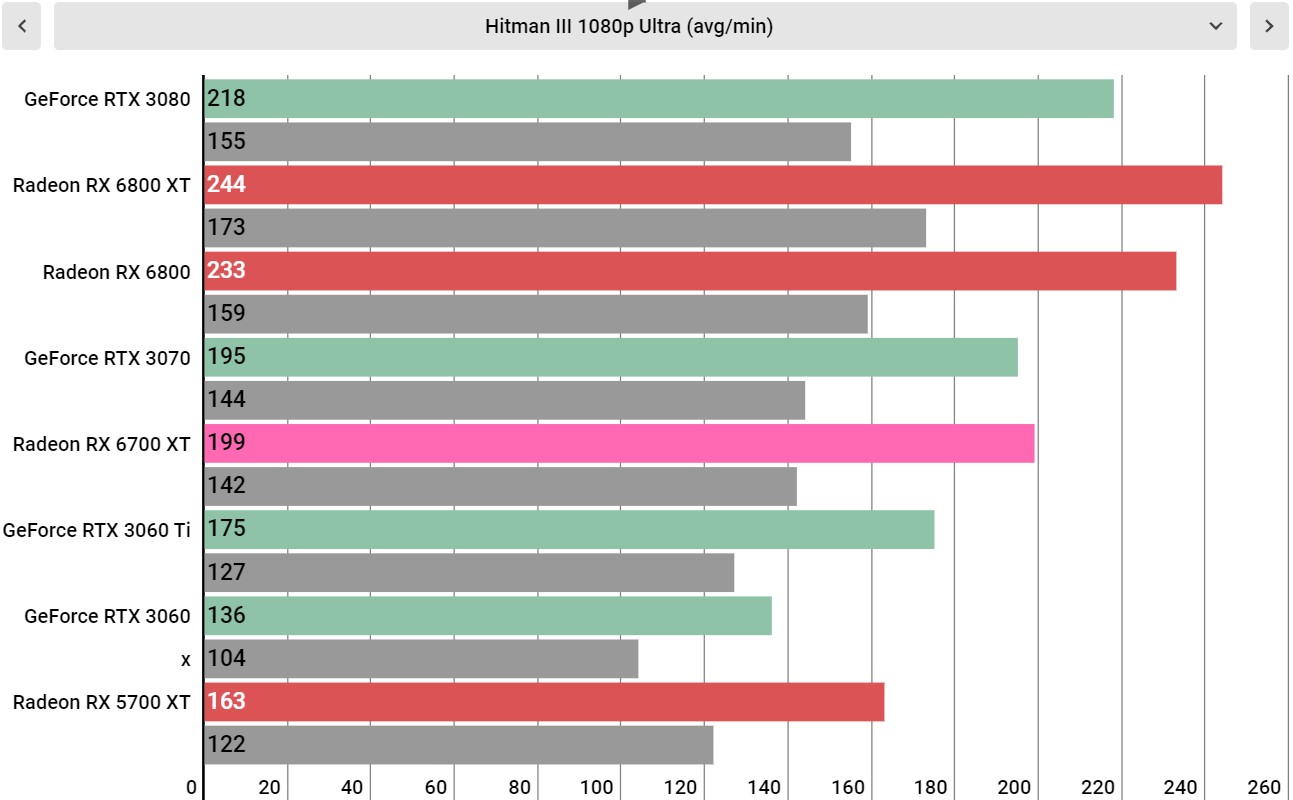
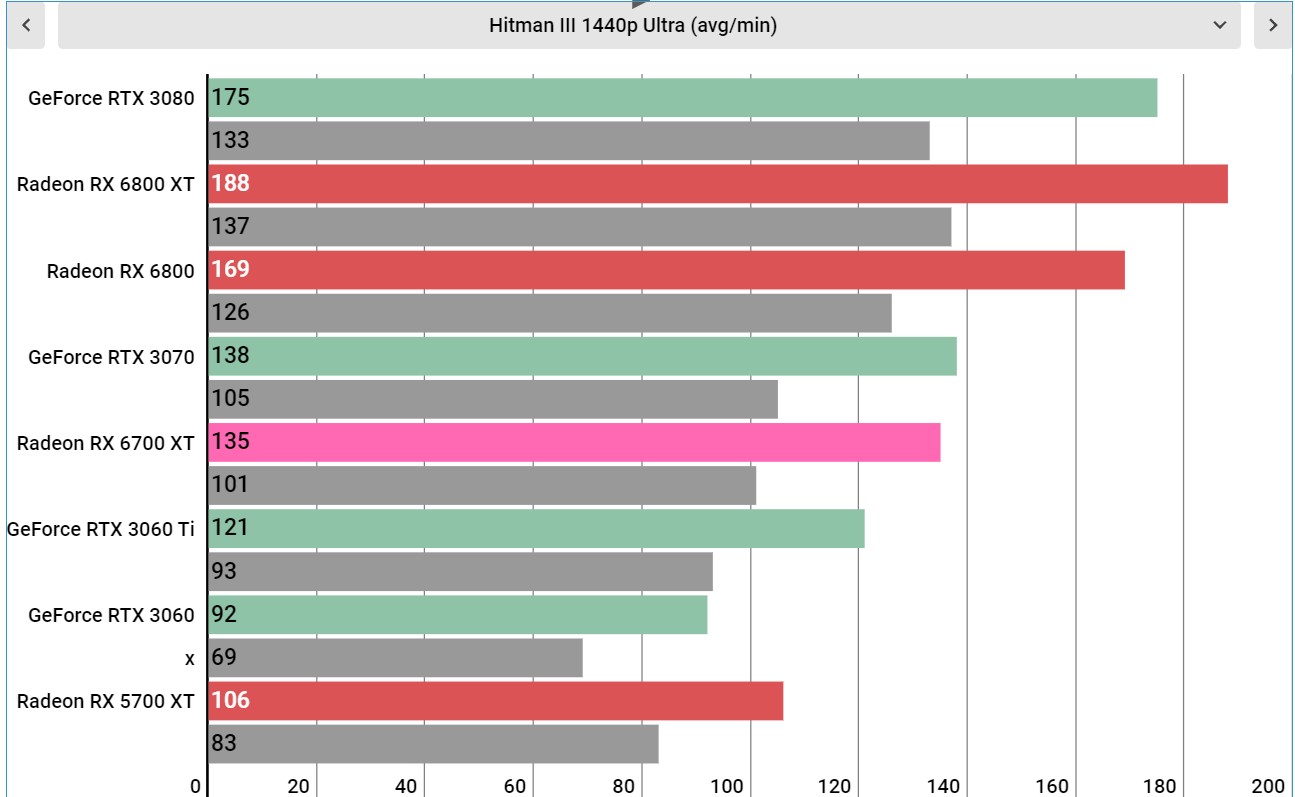
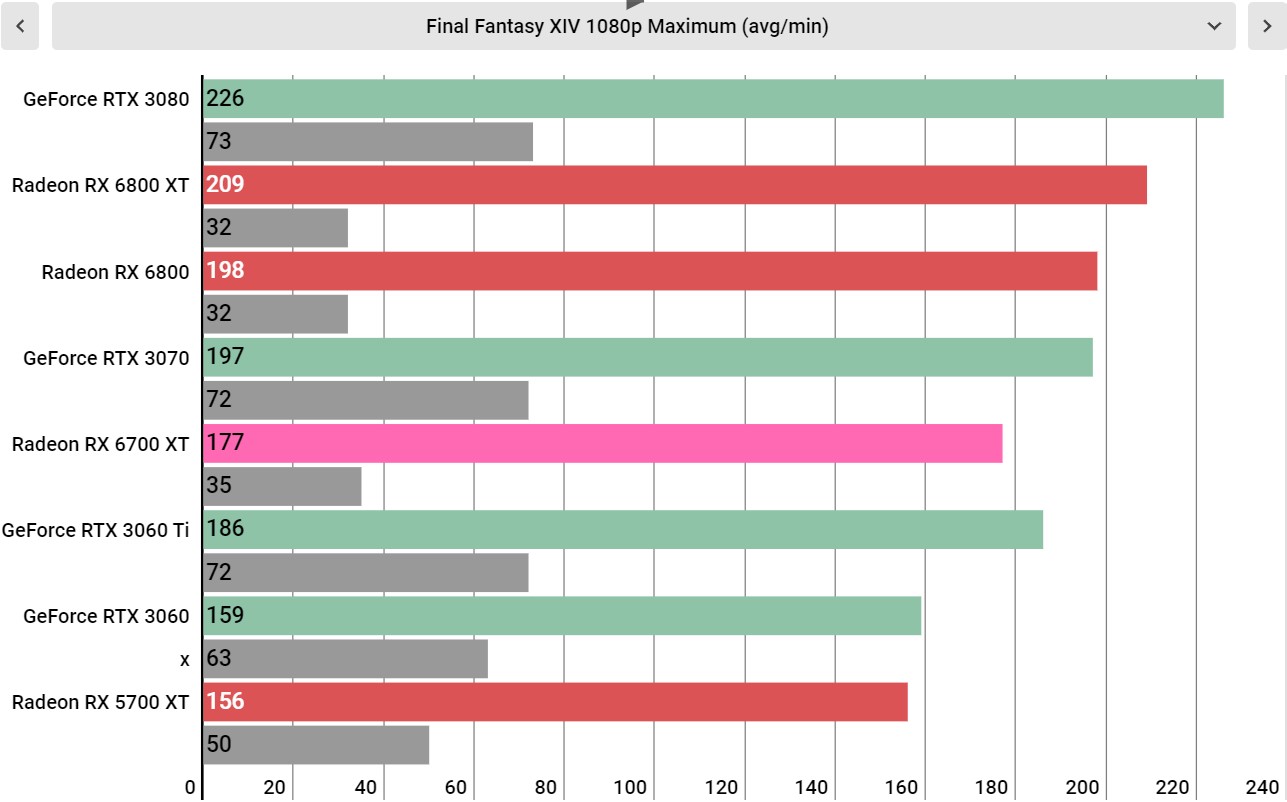
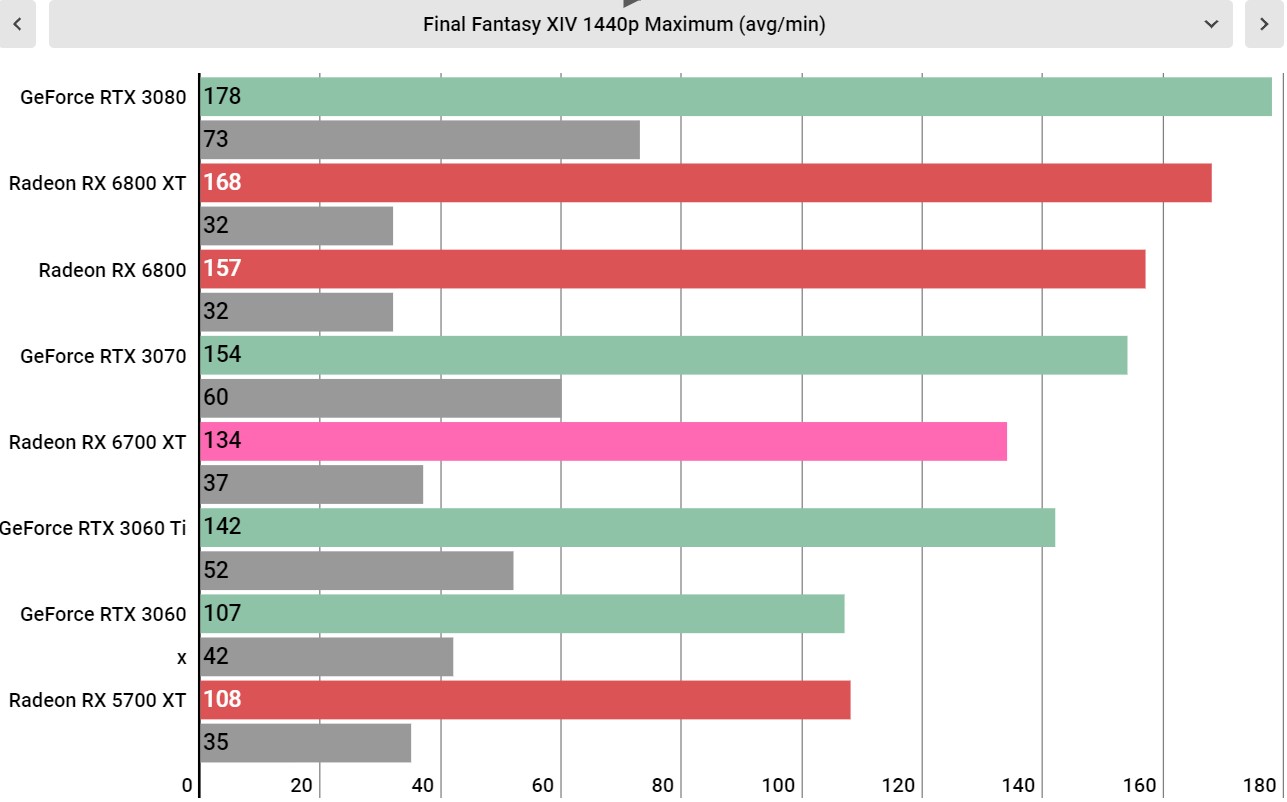
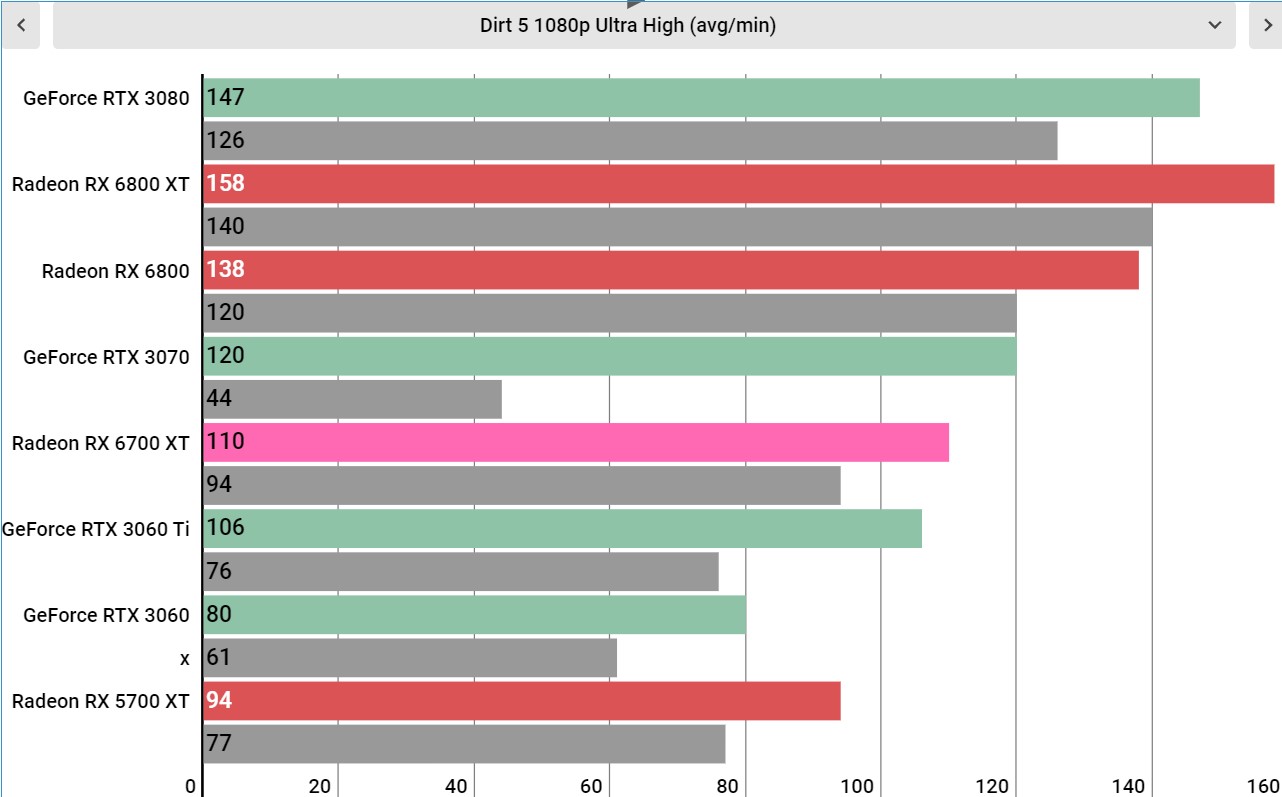
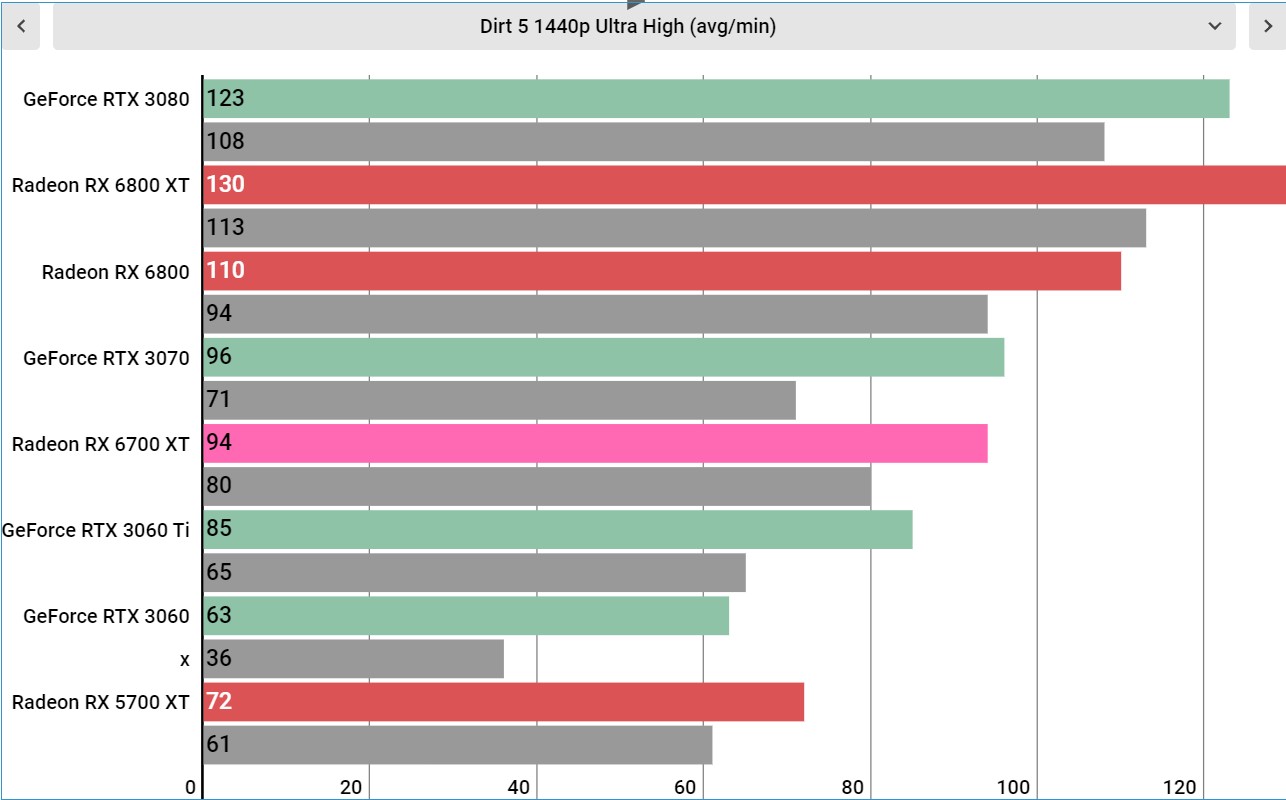
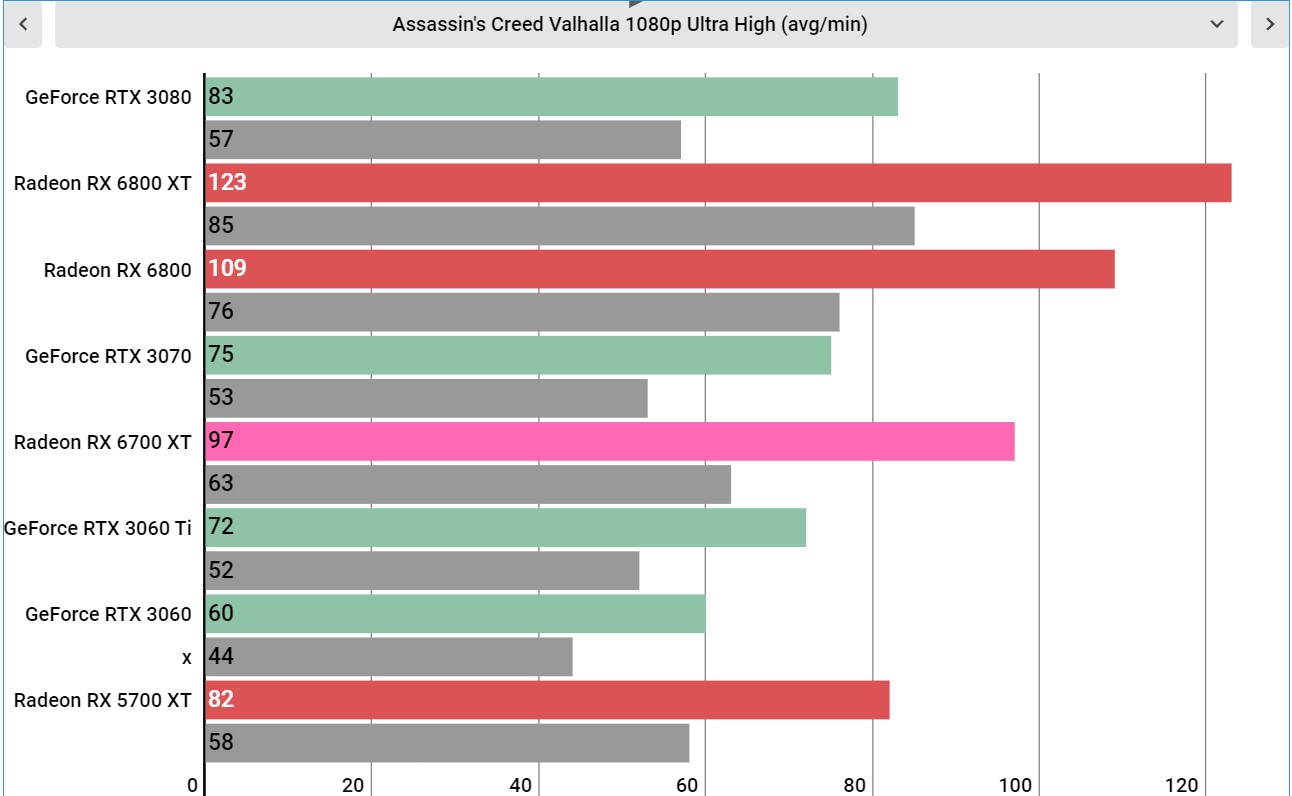
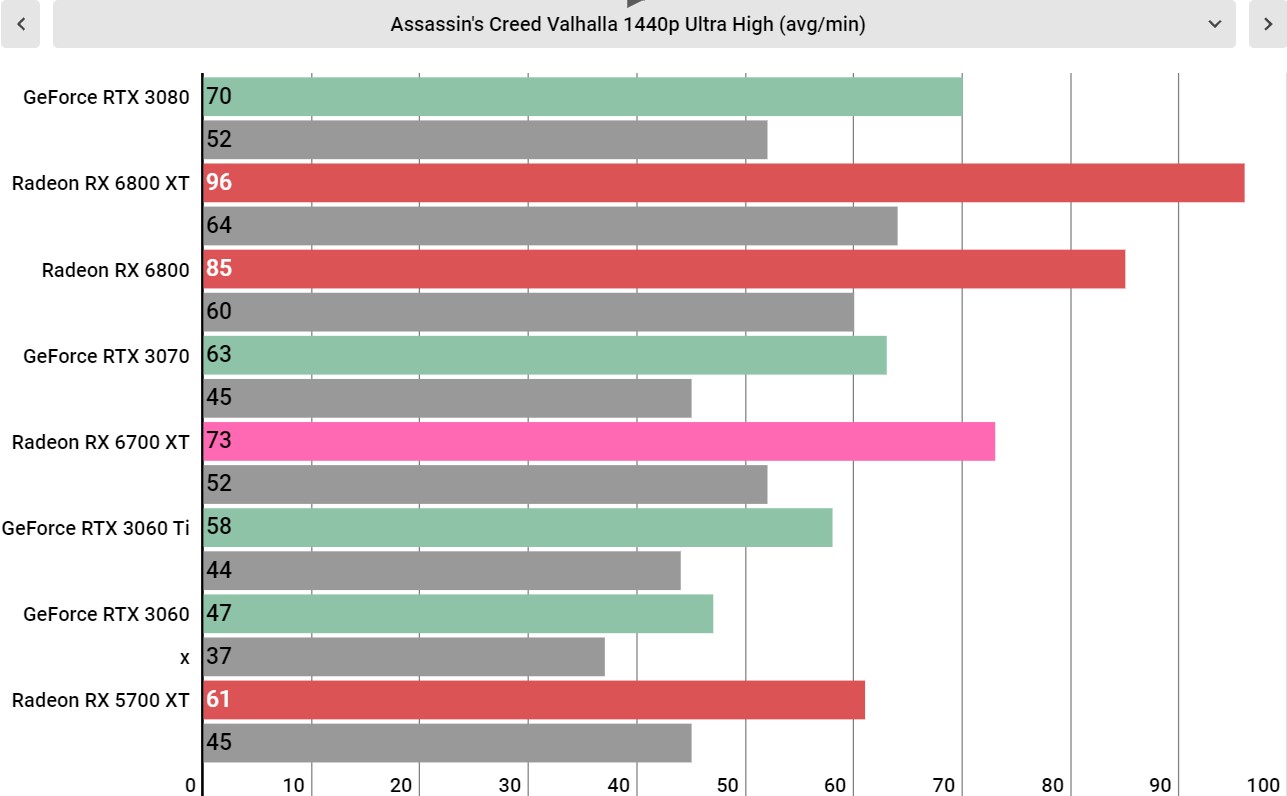
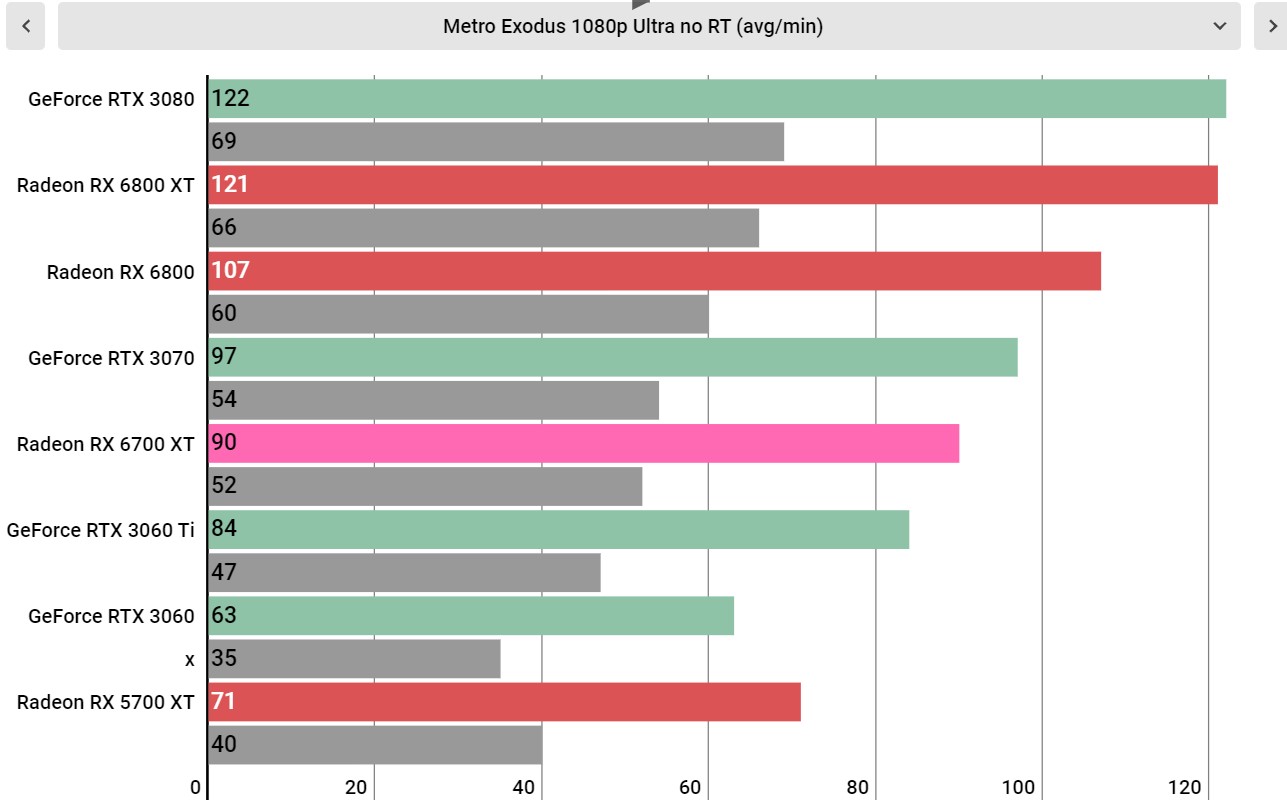
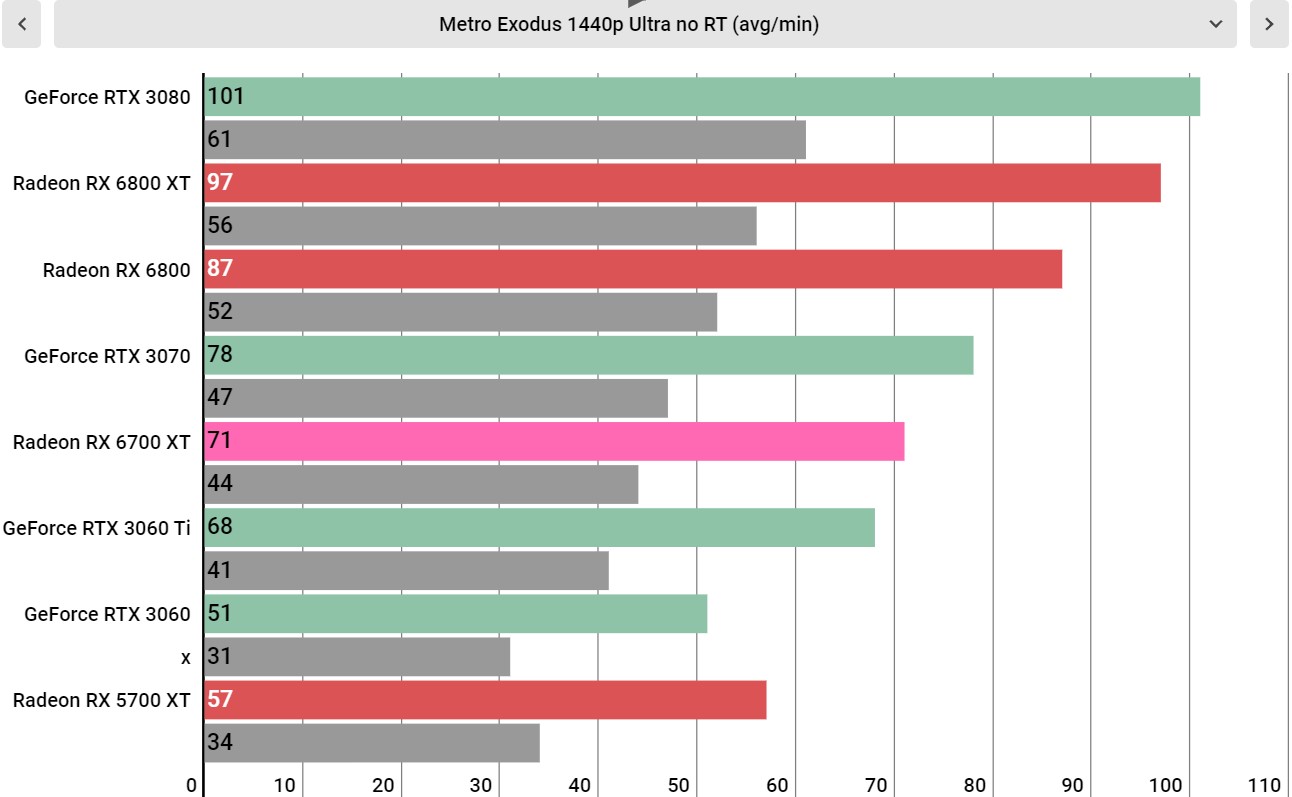
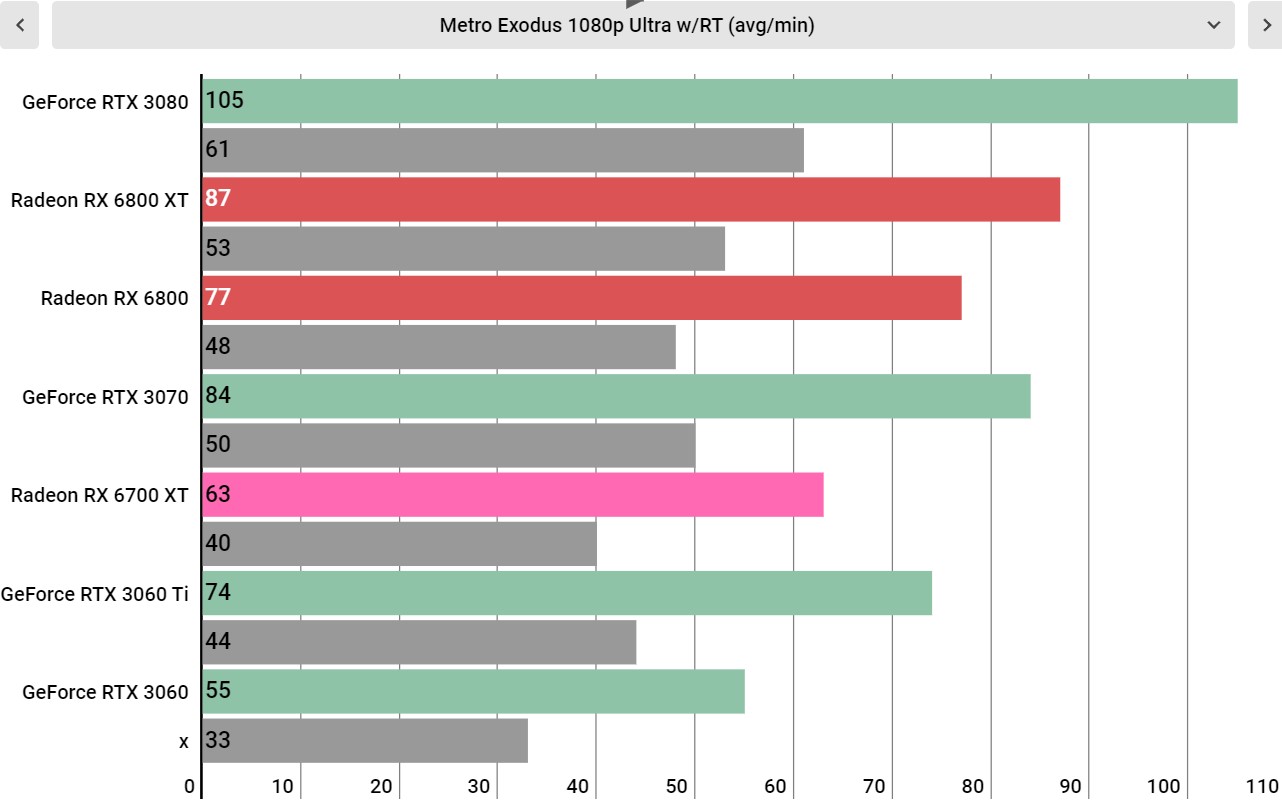
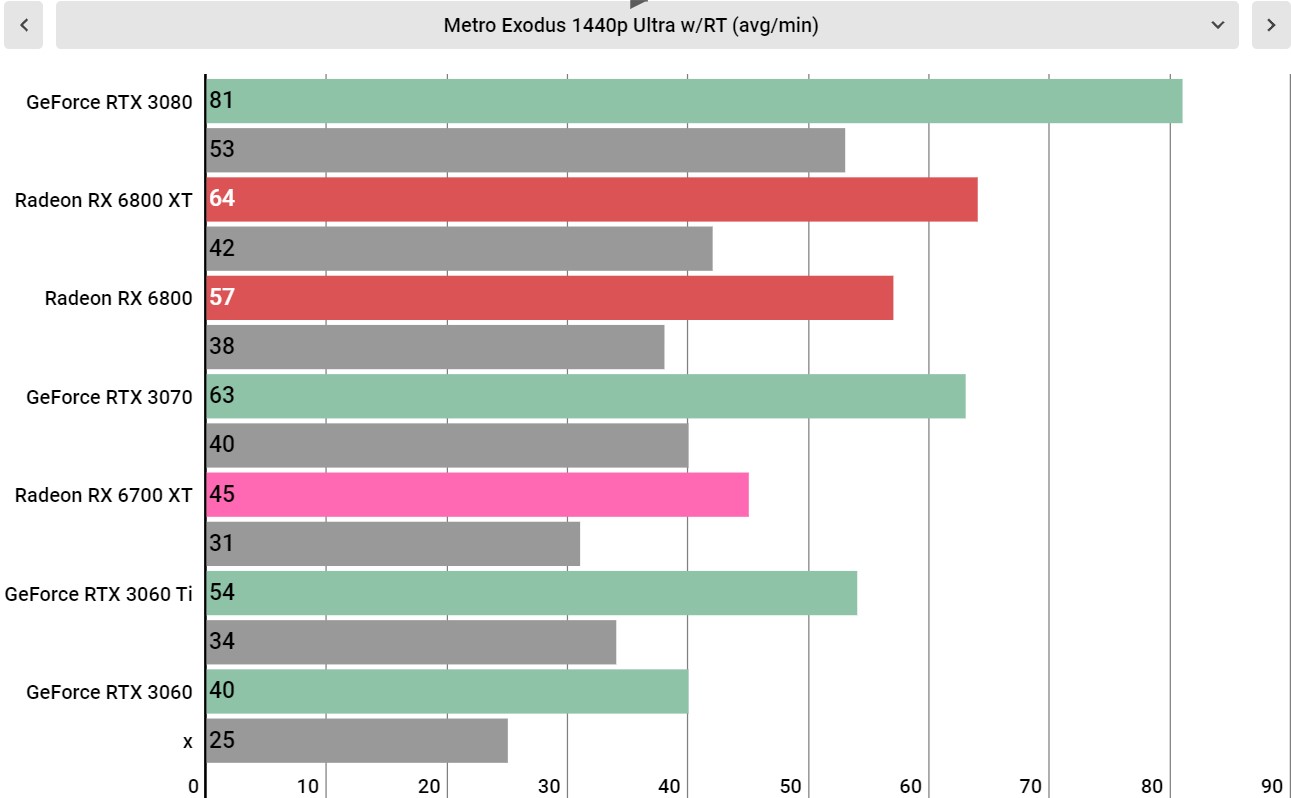
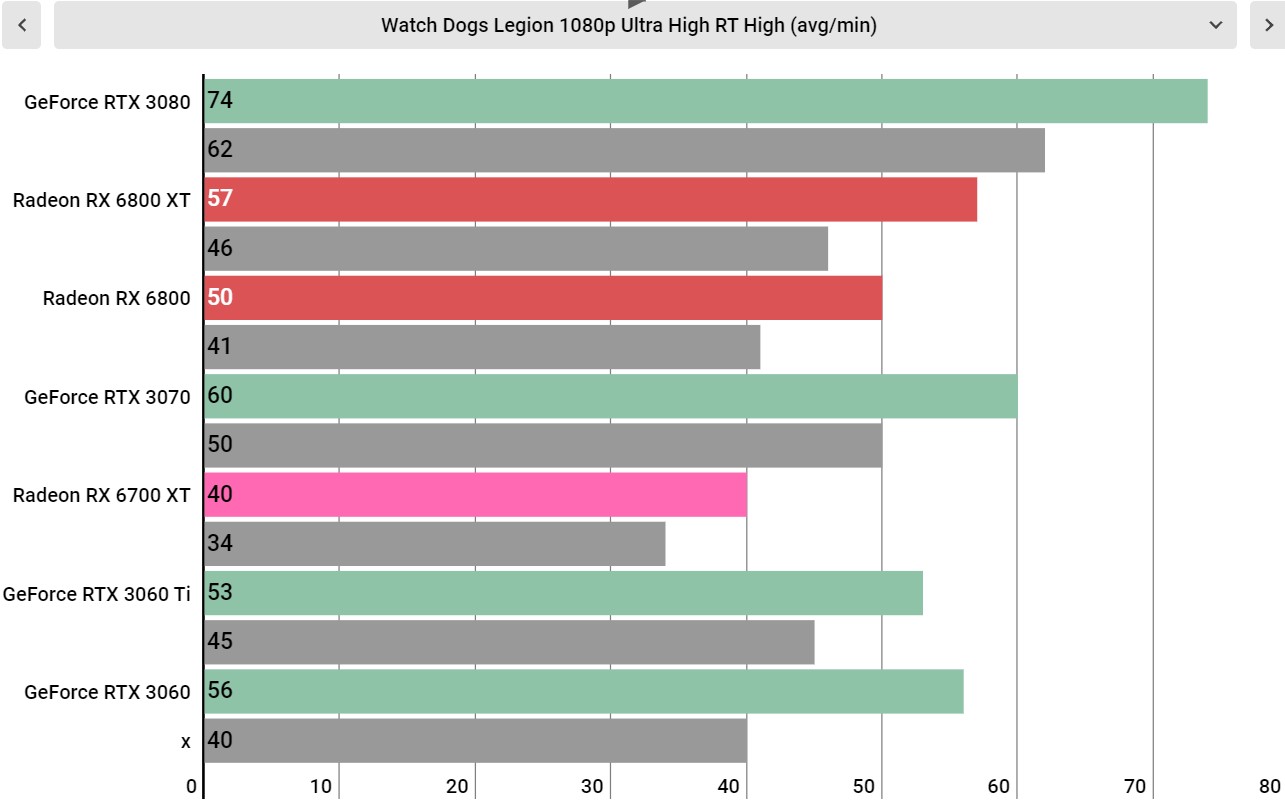
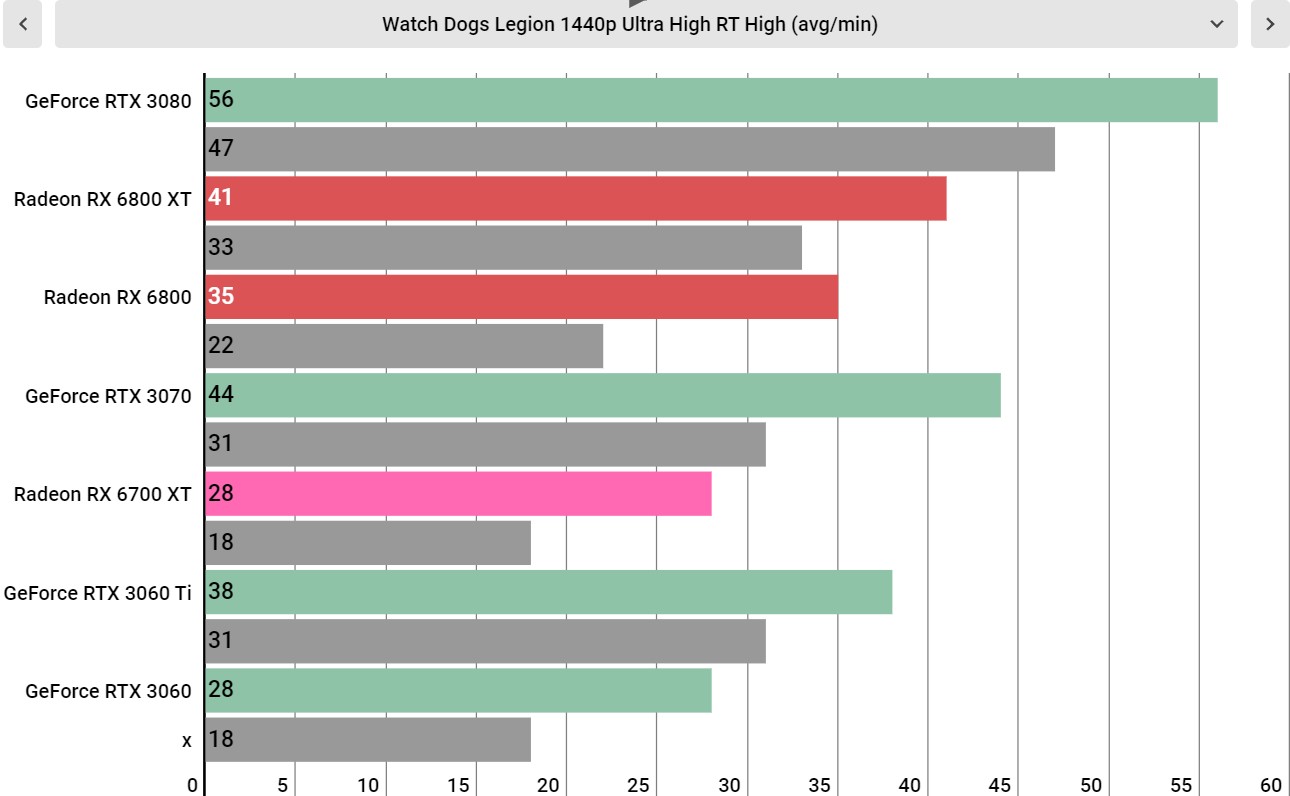
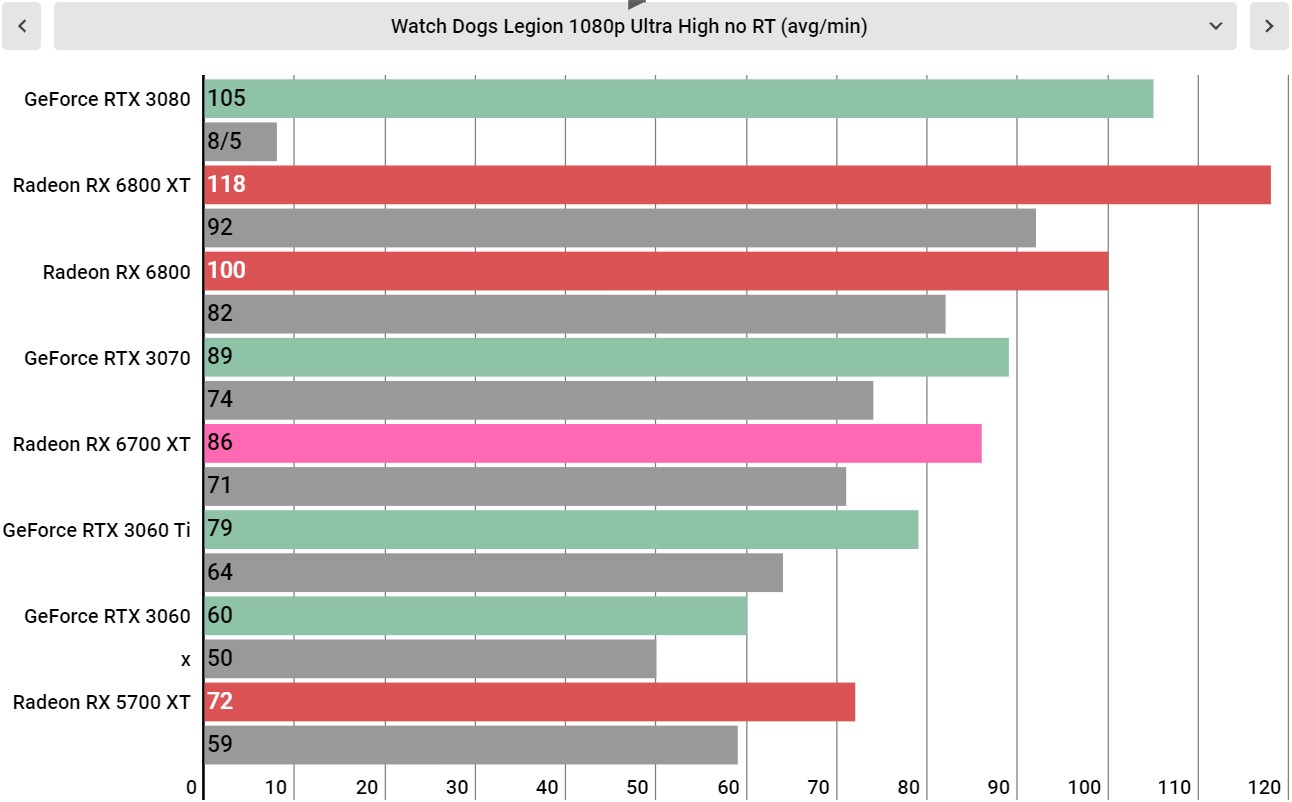
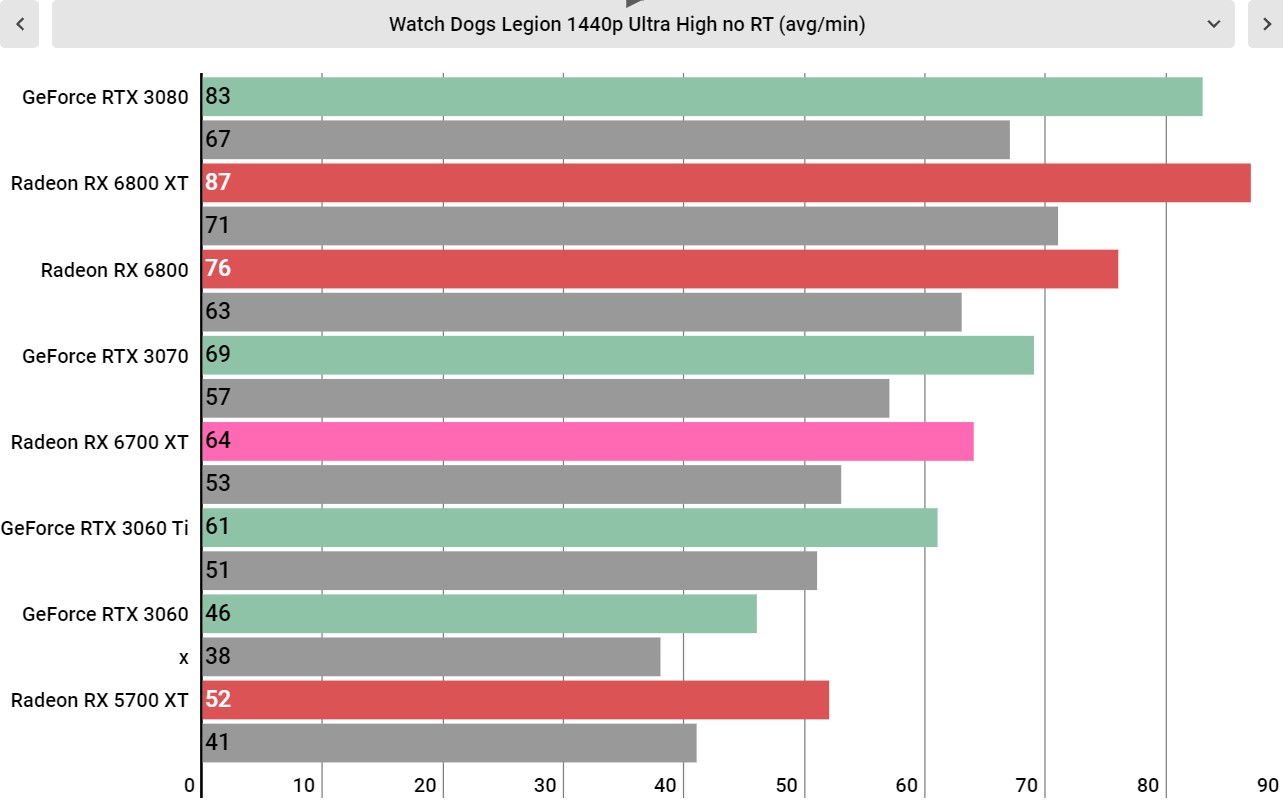
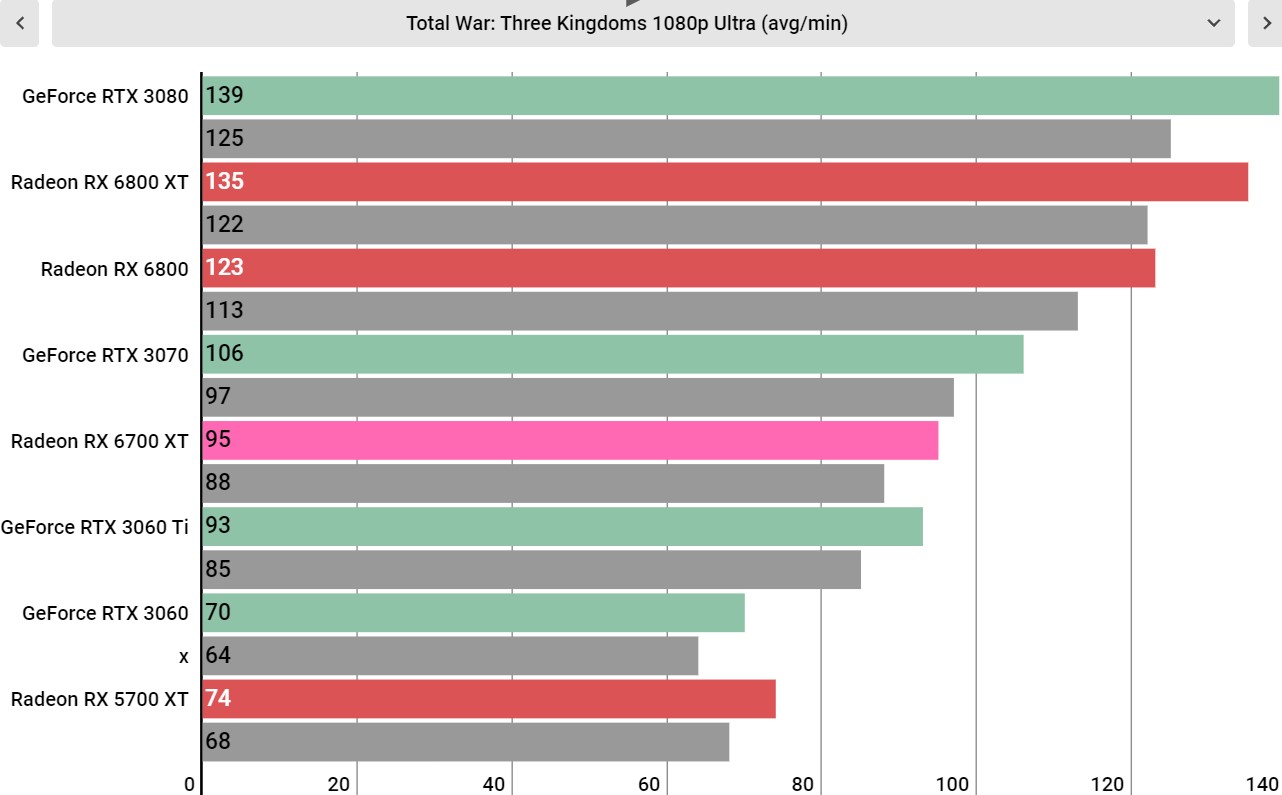
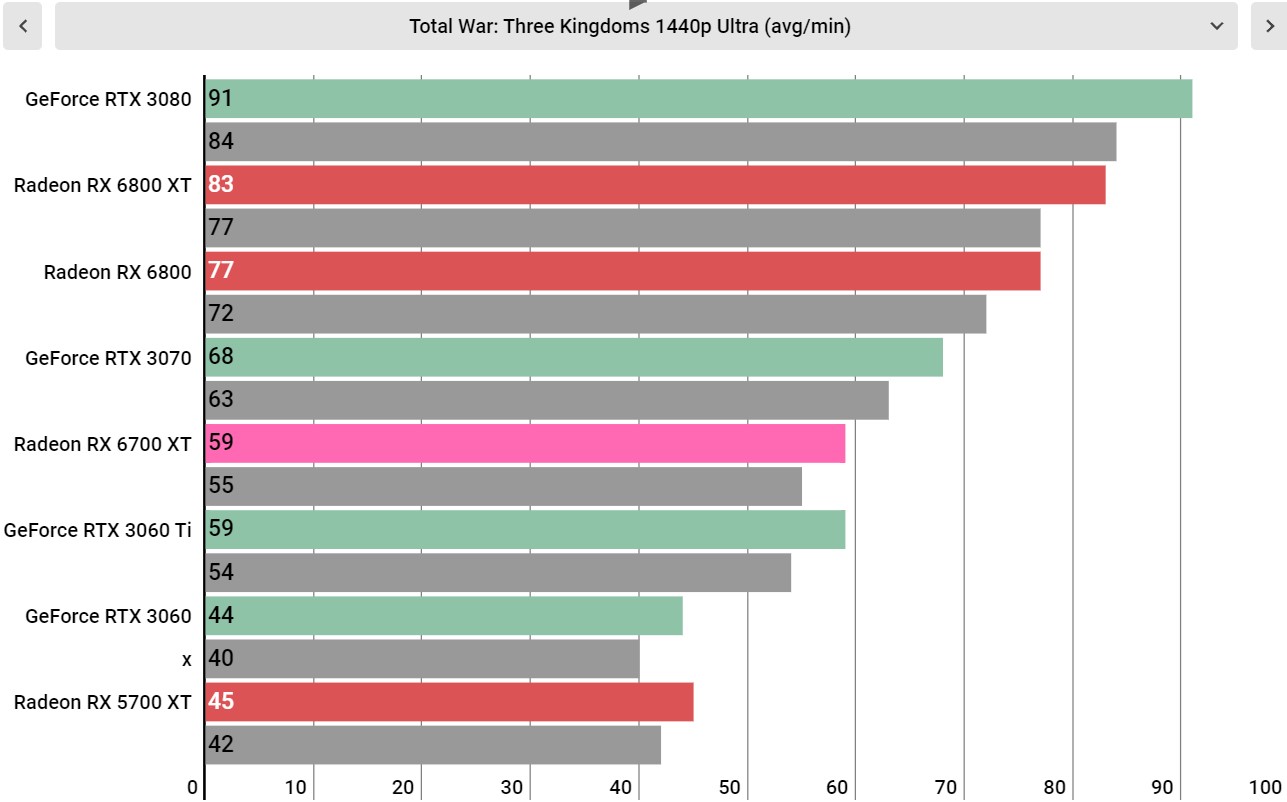
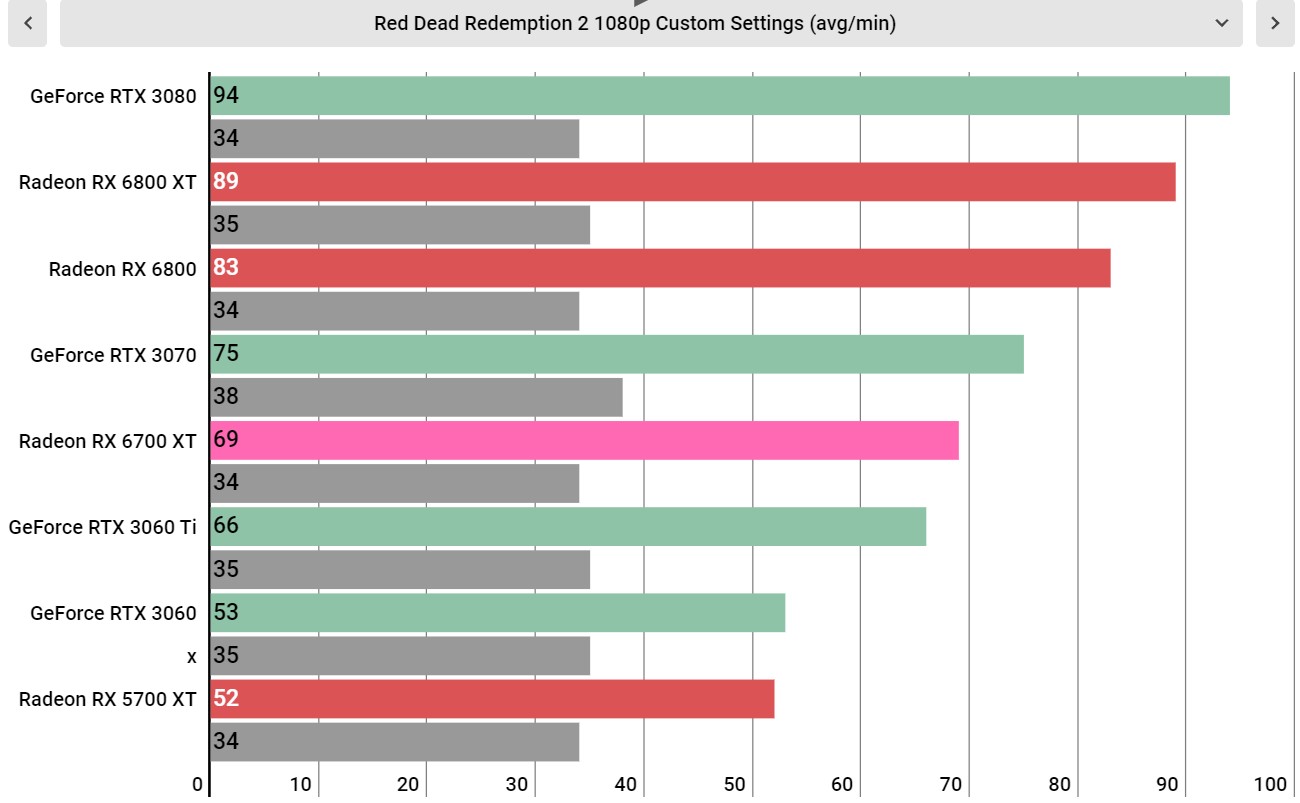
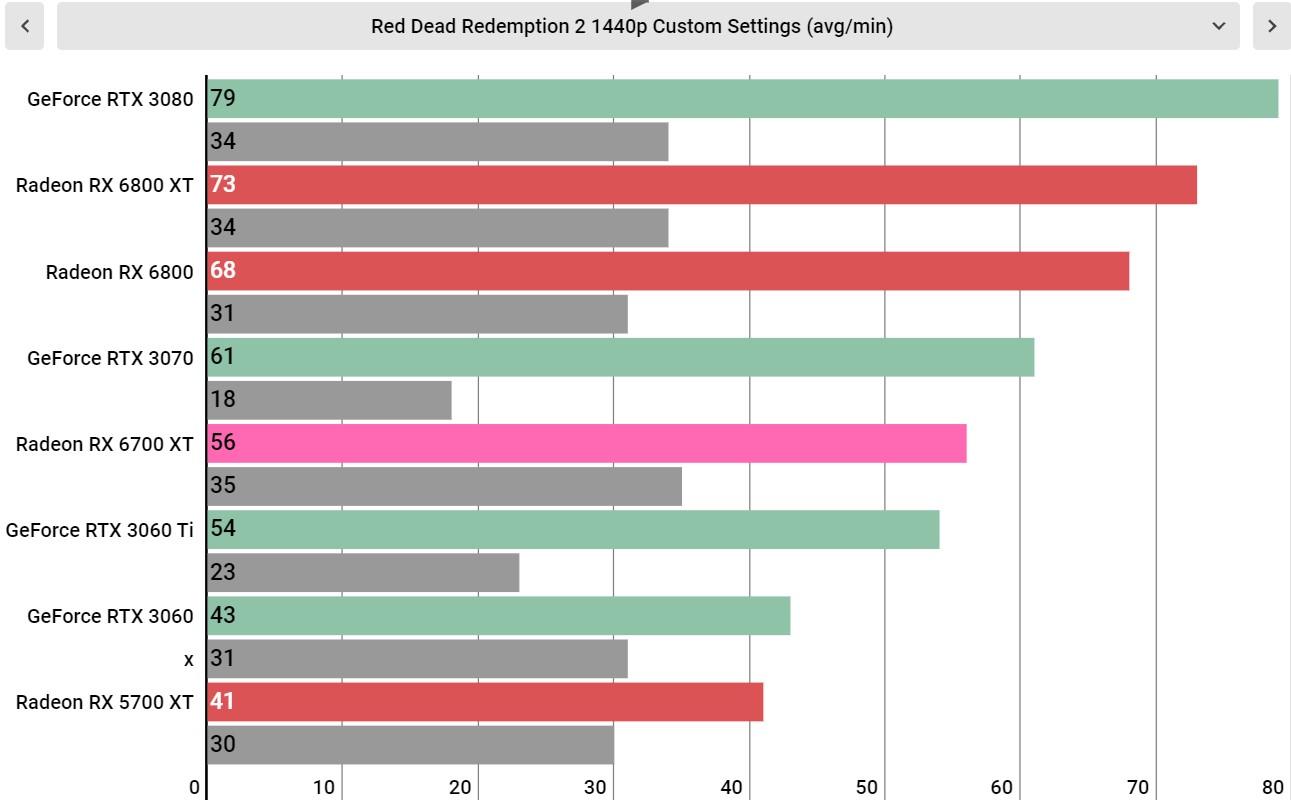
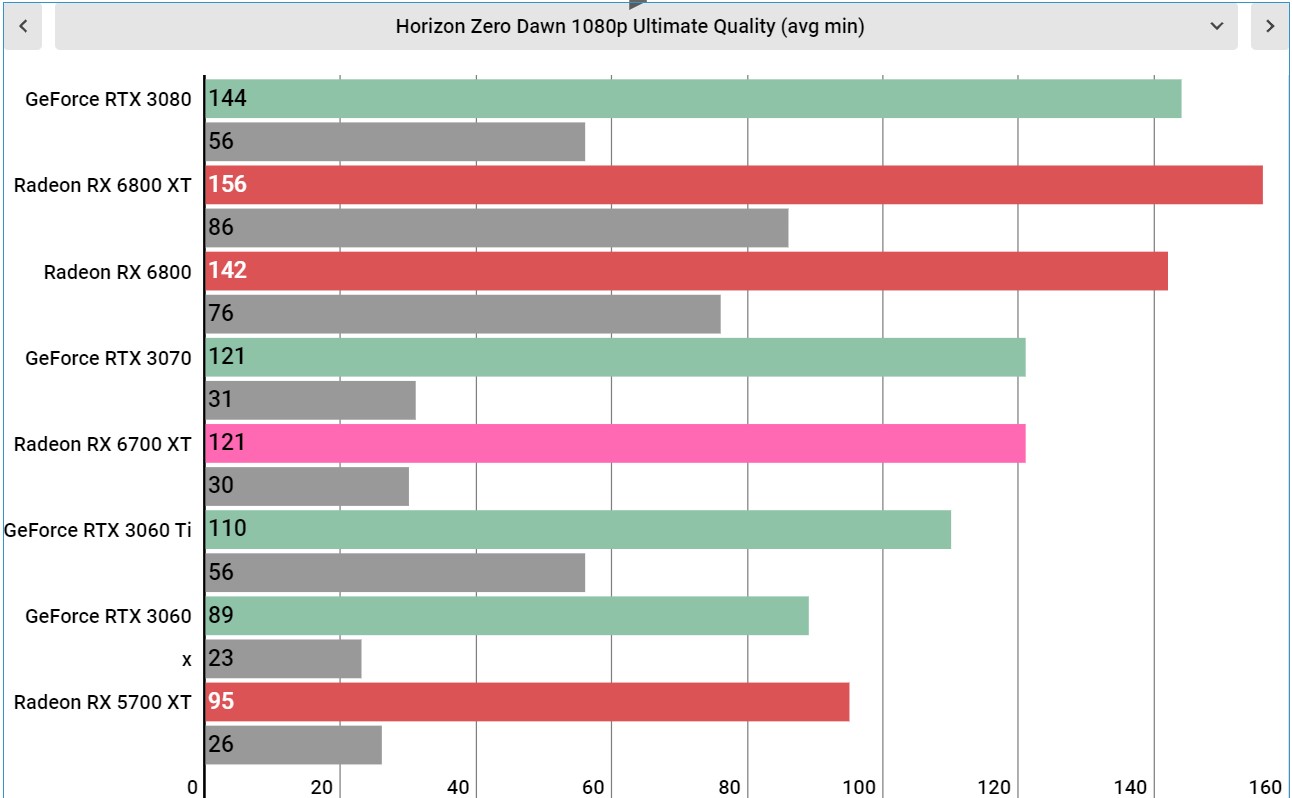
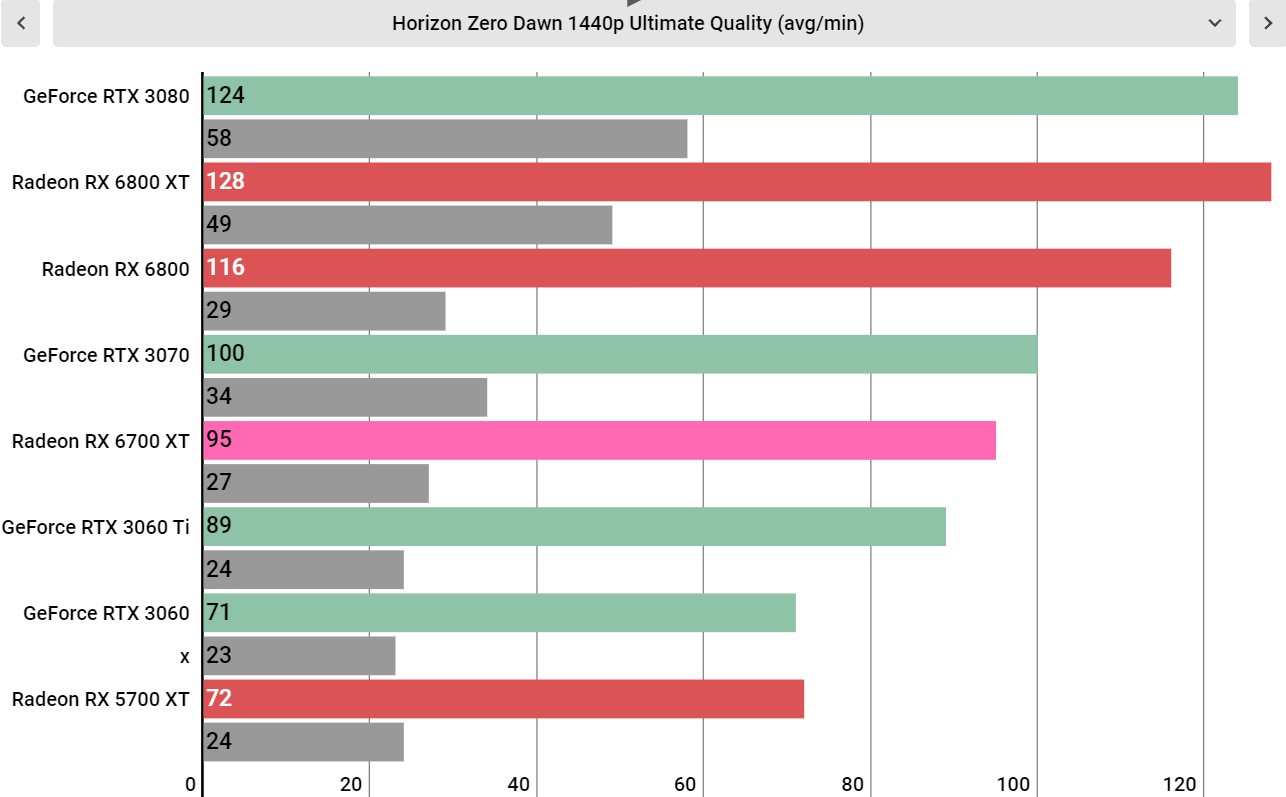
Performance
AMD is pitching the Radeon RX 6700 XT as a 1440p card, and so we’re going to test it both at 1080p and 1440p. That being said, there is enough headroom here in older titles like Final Fantasy XIV Shadowbringers for it to be able to handle 4K. However, we’d still stick to 1440p for this graphics card, and would even turn it down to 1080p if you want to turn ray tracing on.
That’s because, just like the RX 6800 series, the Radeon RX 6700 XT starts to seriously struggle when you enable ray tracing at the card’s target resolution. In Metro Exodus, turning ray tracing to 'high' sees the frame rate drop from 74 fps to 47 fps at 1440p. That’s still what we would call a playable frame rate, but we’d still rather have the 74 fps from the non-ray traced version.
Similarly, in Watch Dogs Legion, the frame rate drops from a solid 64 fps with the Ultra preset at 1440p all the way down to 28 fps – which is below the 30 fps that we consider the bare minimum for tolerable gameplay. With RDNA 2, AMD definitely made the big move to support hardware accelerated ray tracing, but the performance isn’t quite there yet if you want to go all-in on the technology.
For the vast majority of games, however, ray tracing performance is irrelevant, and pure rasterization performance is king. And, if you’re after 1440p gaming, the Radeon RX 6700 XT gets the job done.
This graphics card was able to beat an average 60 fps in all but two of the games in our test suite; Red Dead Redemption 2 and Total War: Three Kingdoms. And, with Red Dead Redemption 2, we crank up every setting but MSAA, so you can easily tweak it to get the extra 4 fps needed to hit the 60 fps sweet spot.
When compared against its closest competition, however, the RX 6700 XT’s value proposition starts to diminish. AMD’s latest can come pretty close to matching the Nvidia GeForce RTX 3070 in some titles, virtually tying it in games like Hitman III and Dirt 5. Hell, the RX 6700 XT even blows the RTX 3070 out of the water when playing Assassins Creed Valhalla.
In some games, like Final Fantasy XIV: Shadowbringers, the RTX 3070 can be up to 15% faster. And when spending $20 can make the difference between whether or not you’ll be able to max out a 144Hz 1440p monitor – it’s pretty easy to justify the slightly higher price.
So with the AMD Radeon RX 6700 XT, perhaps more than most other graphics cards, it’s incredibly important to make sure you know what games you’re going to be playing before you decide to pick this graphics card up. If you play a lot of Assassin's Creed, this might be the perfect graphics card for you, but your mileage will vary depending on what you like to play.
And if you’re anything like we are, and you just like to play anything and everything that comes out, well, our advice right now is to just buy the first GPU that you can find at retail price. Because while there might be tiny struggles here and there, this generation of graphics cards is the best in years. We just wish they were more readily available.
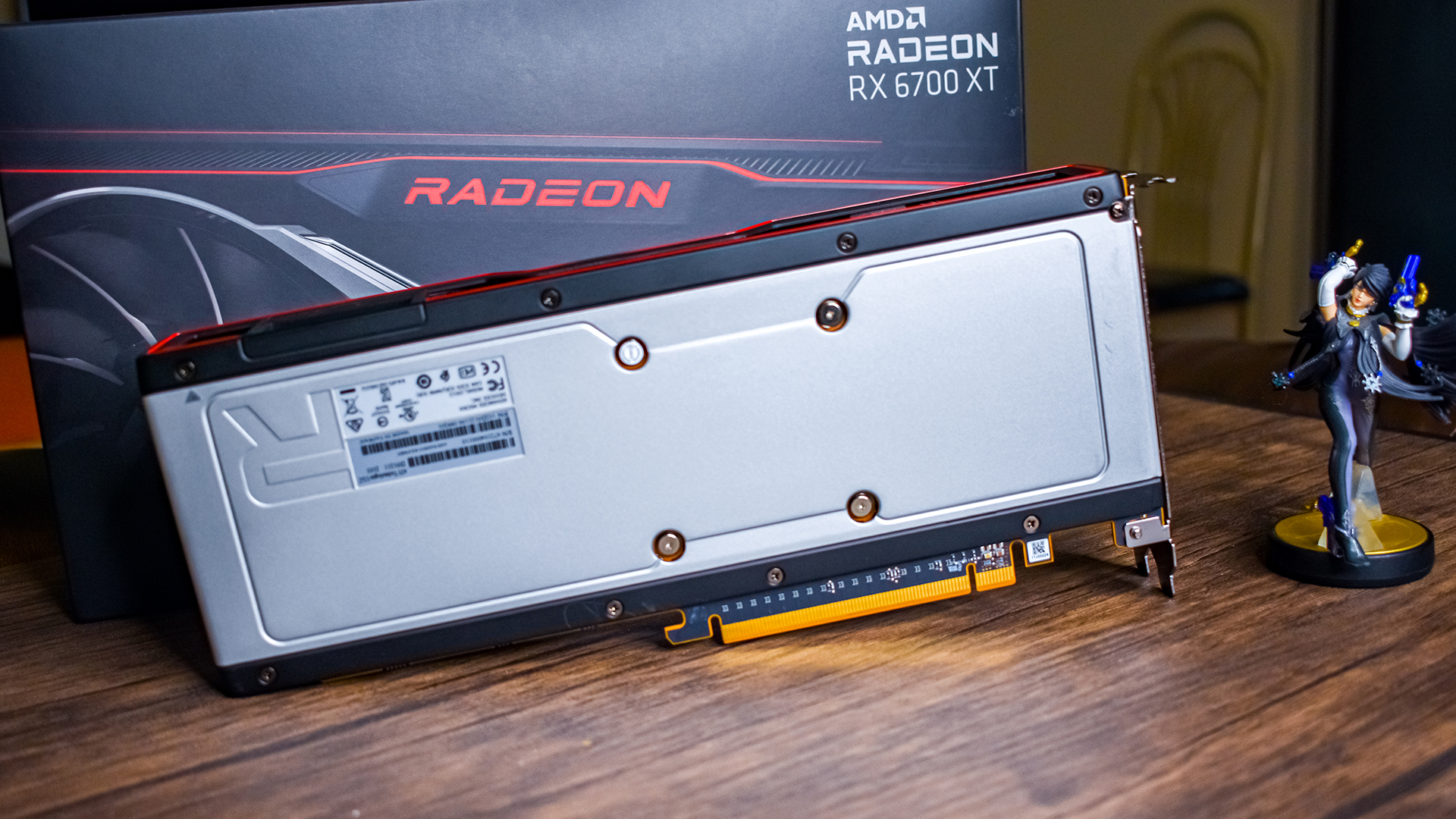
Buy it if…
You’re a 1440p gamer
1440p gaming monitors are quickly growing in popularity, and for good reason. If this is the sweet spot for you, the RX 5700 XT has a lot to offer.
You’re curious about ray tracing, but rasterization is still more important
The AMD Radeon RX 6700 XT can do ray tracing, but it’s not the best graphics card for it on the market. If you just want to turn on the effects to see what they look like before turning it off for high frame rates, this card can give you a glimpse of ray tracing.
You’re comfortable messing with your BIOS
While this graphics card does offer solid out-of-the-box performance, enabling Smart Access Memory through the BIOS is a quick way to add a bit of extra performance.
Don’t buy it if…
You’re holding out for a budget card
At $479, the AMD Radeon RX 6700 XT is still an expensive graphics card. Right now, if you’re after a budget next-gen graphics card, your best bet is the RTX 3060 or RTX 3060 Ti.
You want DLSS or something like it
AMD has been working on its FidelityFX Super Resolution feature to combat Nvidia’s Deep Learning Super Sampling, but it’s not here yet. This is especially important if you care about next-gen eye candy, while still wanting high frame rates.
Bill Thomas (Twitter) is TechRadar's computing editor. They are fat, queer and extremely online. Computers are the devil, but they just happen to be a satanist. If you need to know anything about computing components, PC gaming or the best laptop on the market, don't be afraid to drop them a line on Twitter or through email.
